Migration & Obsession
Year of the Blackburnian, pt. II
Migration
My 2025 birding goal was a decent photo of a Blackburnian Warbler (Setophaga fusca).
writes in :Ooh, ahh. What a handsome guy. Blackburnian Warblers have a legendary status among birders.
A few early warblers I saw were Palms (Setophaga palmarum). Yellow-rumped (Setophaga coronata) were pleasant in their omnipresence.
Then Yellow (Setophaga petechia) showed up.
Next I saw Magnolia (Setophaga magnolia), Nashville (Leiothlypis ruficapilla) & co.
It was great to see those species, but the species I wanted was the Blackburnian.
Birders rearrange their priorities for migration. Birding trumps what it otherwise wouldn’t or shouldn’t.
Before doing anything, I like two to four cups of coffee. Caffeine is my vice. Programming a coffeemaker so it’s brewed when you wake up—at a difficult-to-justify hour for the sometimes-difficult-to-justify pursuit of birds—is a practical pleasure.
The morning before my Blackburnian, having coffee let me prepare and hope for “the intricate black-and-white plumage set off by flame-orange face and throat, the impossibly high-pitched flourish at the end of the song.”
Maybe it was time to try a change. Stick with where I’d been going, where I’d seen a Blackburnian before, or try another spot?
The other spot I considered had previously brought a Barrow’s Goldeneye (Bucephala islandica). Maybe it would deliver a Blackburnian.
I went where I’d been going. It’d be terrible to go somewhere different then see Blackburnian listed on eBird where I’d chosen not to go—after going so many times. A patch is only as reliable as one’s devotion to it.
The parking lot was close to full. It was before 6:00, but a weekend during migration. Early birds get worms; early birders get birds.
To fine tune my camera, I’d fiddled with its autofocus. One YouTube video said, “we’re all wired differently…pick the stuff that you think is gonna work best for you.”
A Baltimore Oriole (Icterus galbula) let me see what did or didn’t.
I was iffy about one of the settings. A Common Yellowthroat (Geothlypis trichas) let me test it further. I was the Goldilocks of autofocus.
Scanning treetops, I came across another birder. He’d found a Blackburnian(!) and kindly pointed it out.
It was facing the wrong way, then wasn’t. I held down my shutter; the Blackburnian left; I reviewed the photos. An in-focus tree branch, a blurry orange-throated bird.
Abysmal!
I sought other birds to take my mind off it. Orioles: beautiful, not impossible to find.
Northern Parula (Setophaga americana) are also reliable. Pretty little warblers.
I share good photos I take; that doesn’t mean I don’t sometimes miss.
Often the species we want most are the most challenging.
I tried a new area with a group of birders. A Blackburnian sang—“zip zip zip zip zip zip zip zip titititi tseeeeee, with the final note much higher pitched.” Someone spotted it. I did not. The bird left and so did I.
Disappointed, I took pictures of Rose-breasted Grosbeak (Pheucticus ludovicianus).
Being migration, there were crowds. Cons are obvious, but a pro is if someone sees a bird 12 people stop. That’s how I got another shot at a Blackburnian.
A group spotted a Cape May (Setophaga tigrina) and a Blackburnian. Some photos I took show the reality of bird photography:
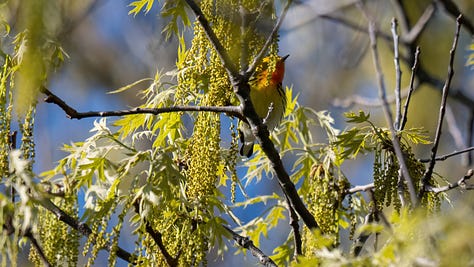

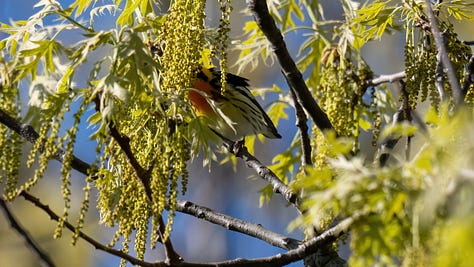
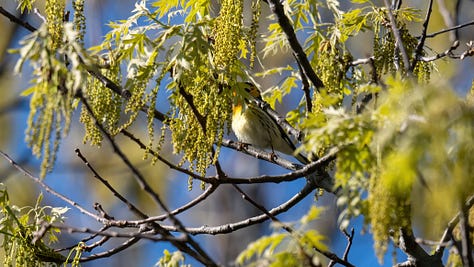
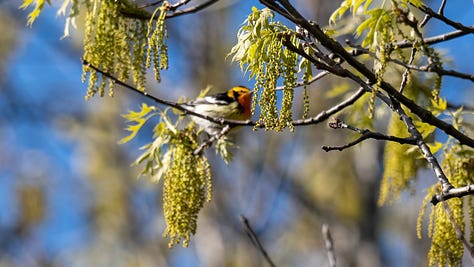
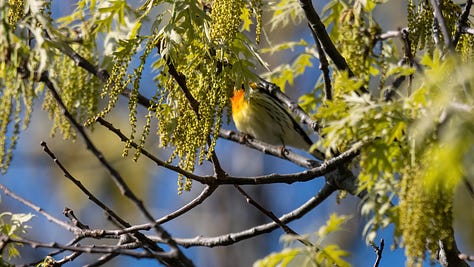
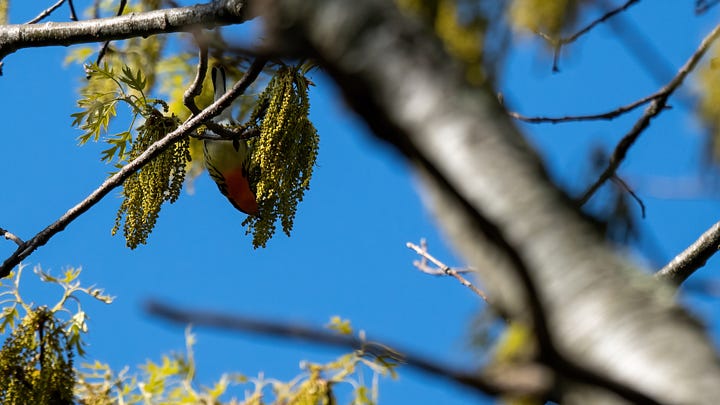
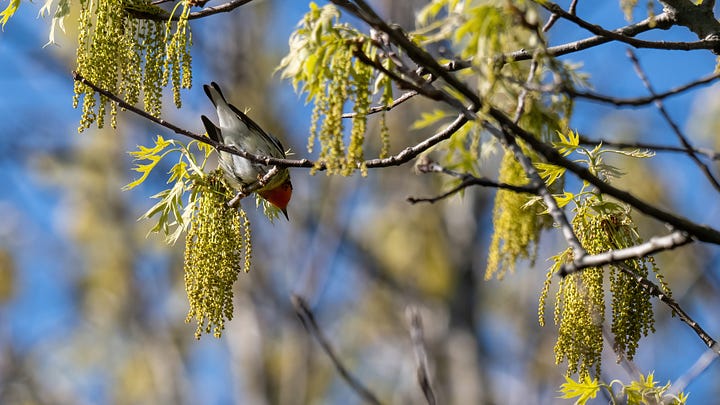
I got passable photos, so celebrated with a drive-thru McDonald’s iced coffee.
Still riding high, I went back that evening. Birds galore.
Chestnut-sided (Setophaga pensylvanica), Black-throated Green (Setophaga virens), Black-throated Blue (Setophaga caerulescens).
American Redstart (Setophaga ruticilla), Northern Parula (Setophaga americana).
Black-and-white (Mniotilta varia) were abundant and unbothered.
A photographer saw my camera and asked if I’d seen a Blackburnian. “This morning” I said, adding “Redstart, Chestnuts, Black-throated Green and Blue that way.”
Obsession
Now that I have my Blackburnian, I can exhale. I’m driven by love for birds, but also goals. I get obsessed. My latest birding goal, now fulfilled, was photographing a:
Blackburnian Warbler (Setophaga fusca)
Some past or ongoing obsessions:
Singing Prairie Warbler (Setophaga discolor)
Brown Creeper (Certhia americana)—ongoing.
Red-cockaded Woodpecker (Dryobates borealis)
Heermann’s Gull (Larus heermanni)
Osprey (Pandion haliaetus)—ongoing.
Fox Sparrow (Passerila iliaca)—ongoing.
A mental checkmark next to Blackburnian, I’m taking my foot off the gas. A morning after my encounter I birded just for half an hour. I’d already gotten what I wanted.
Walking to my truck that quick morning, I stopped for a Black-throated Green. There was a Scarlet Tanager (Piranga olivacea). It was obscured, then faced the wrong way.

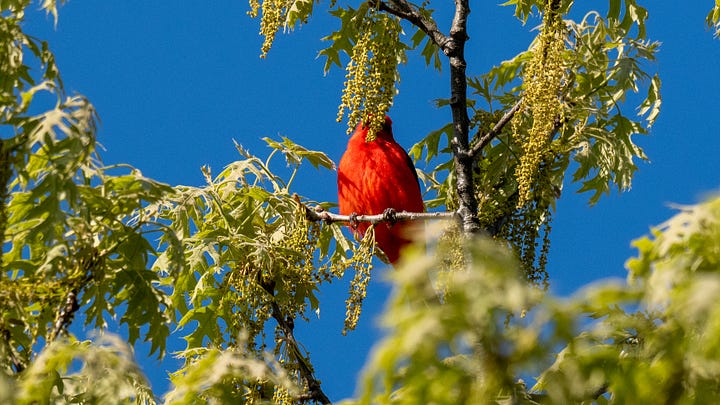
I took pictures anyway. It left, so I left. Is the Scarlet Tanager my new Blackburnian? I reviewed my photos and was pleased. Scarlet Tanager isn’t my new Blackburnian.
At this point I don’t have a birding goal. I don’t want one. There are other things to get obsessed with. I’m satisfied and will bird for the sake of birds and fresh air.
2024 was my big year—a big goal. 2025 has been my year of the Blackburnian. I’m in no rush for another birding goal or a new bird species to get obsessed with.



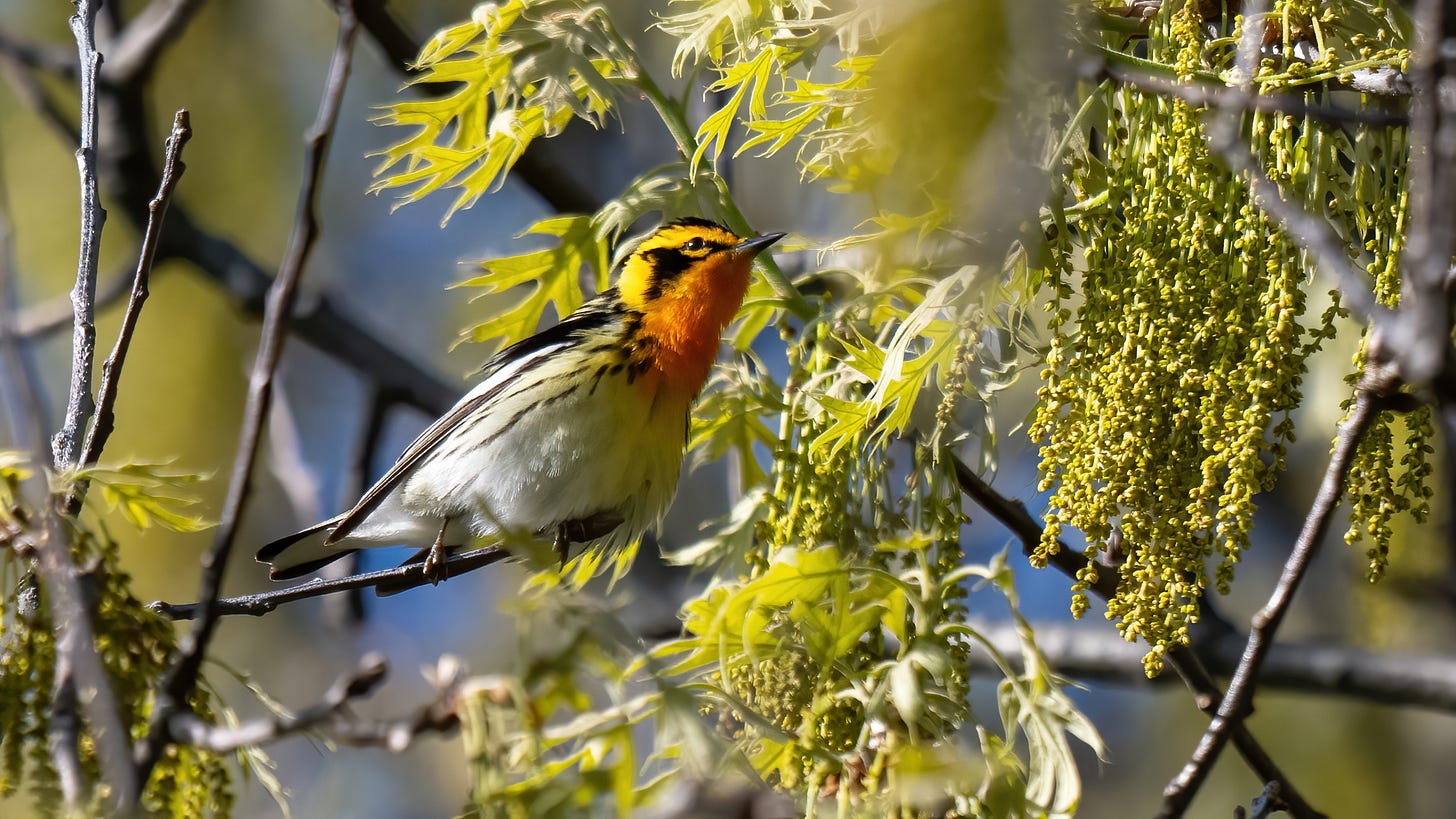

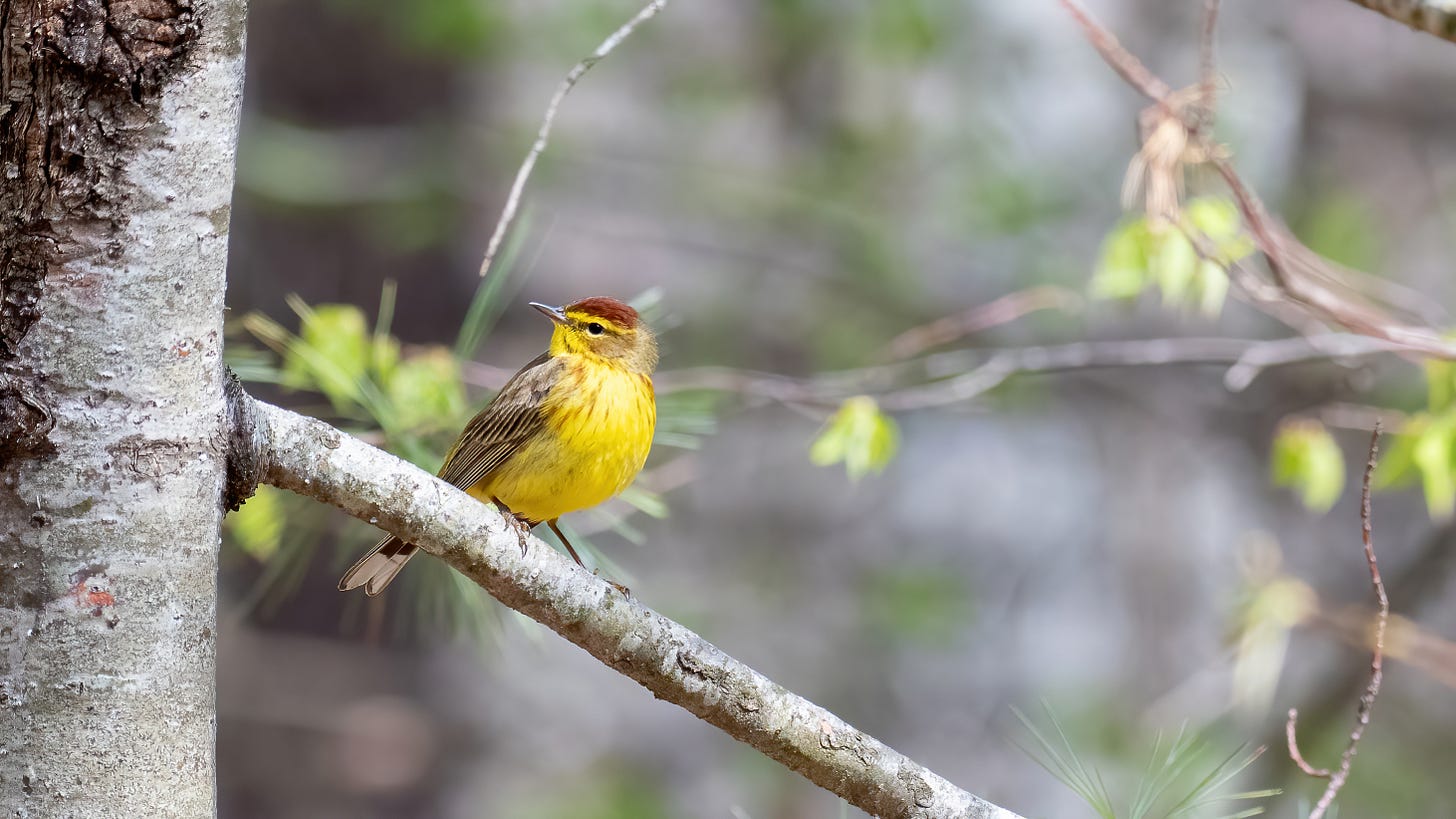
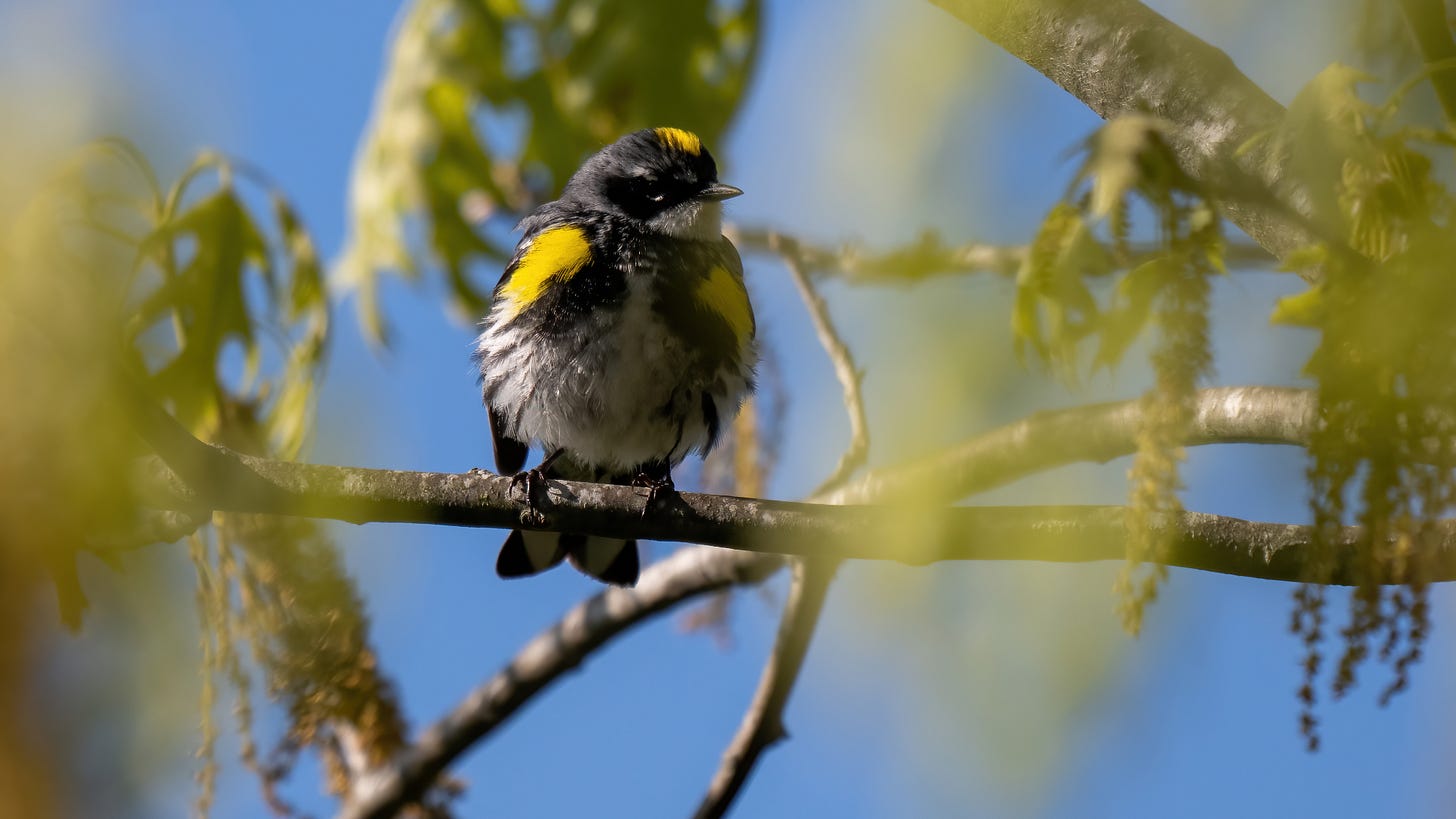
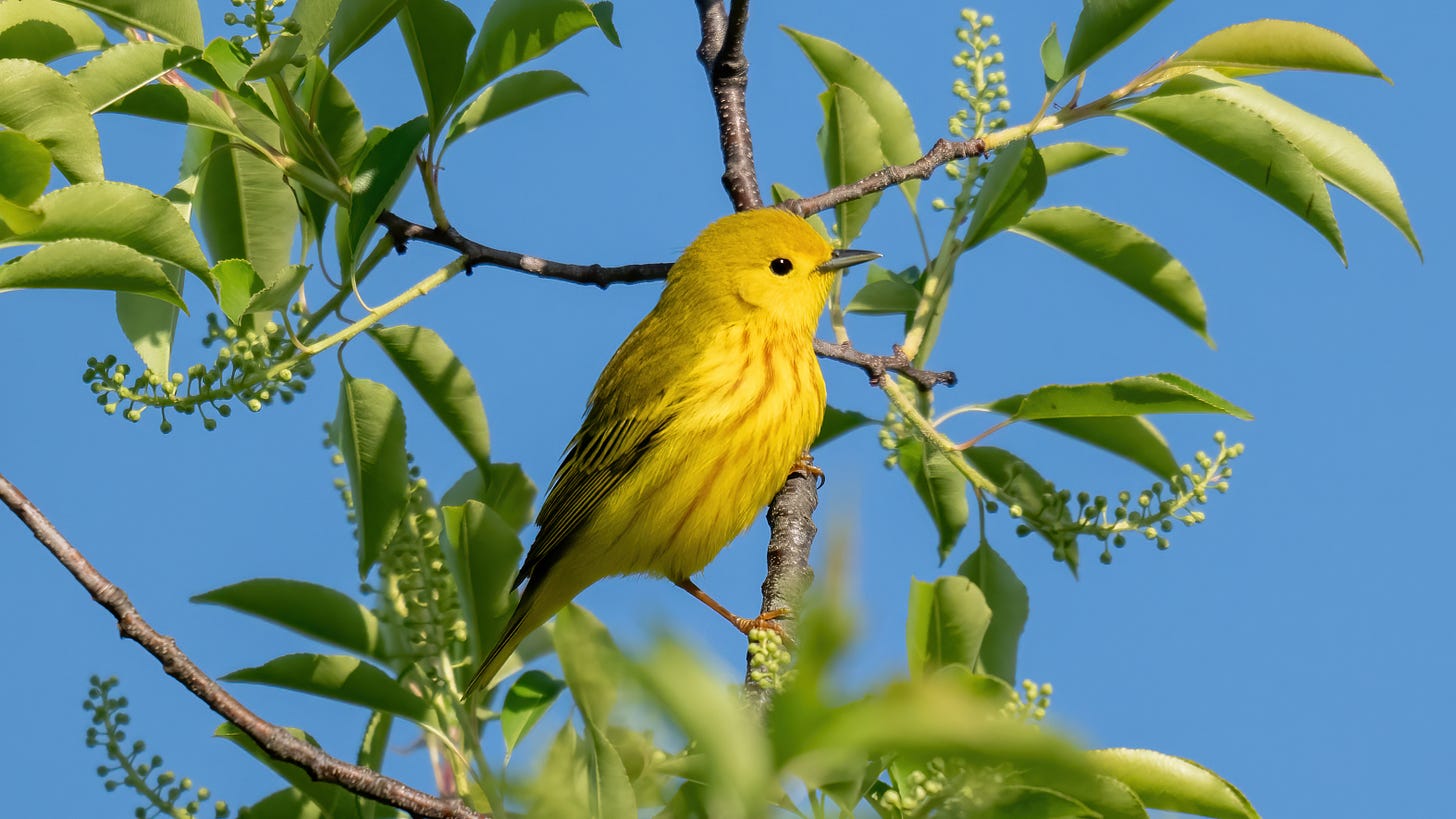
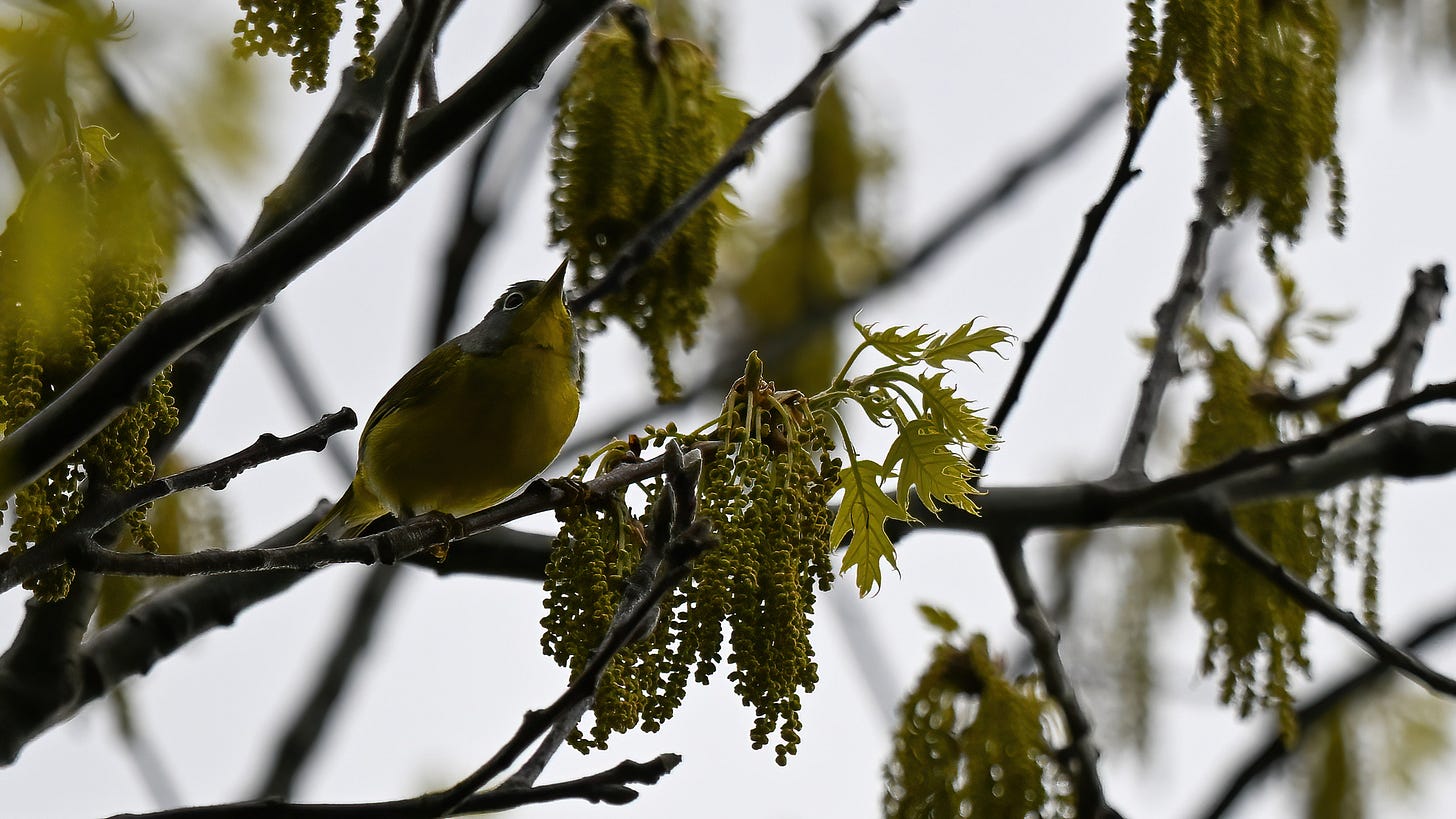
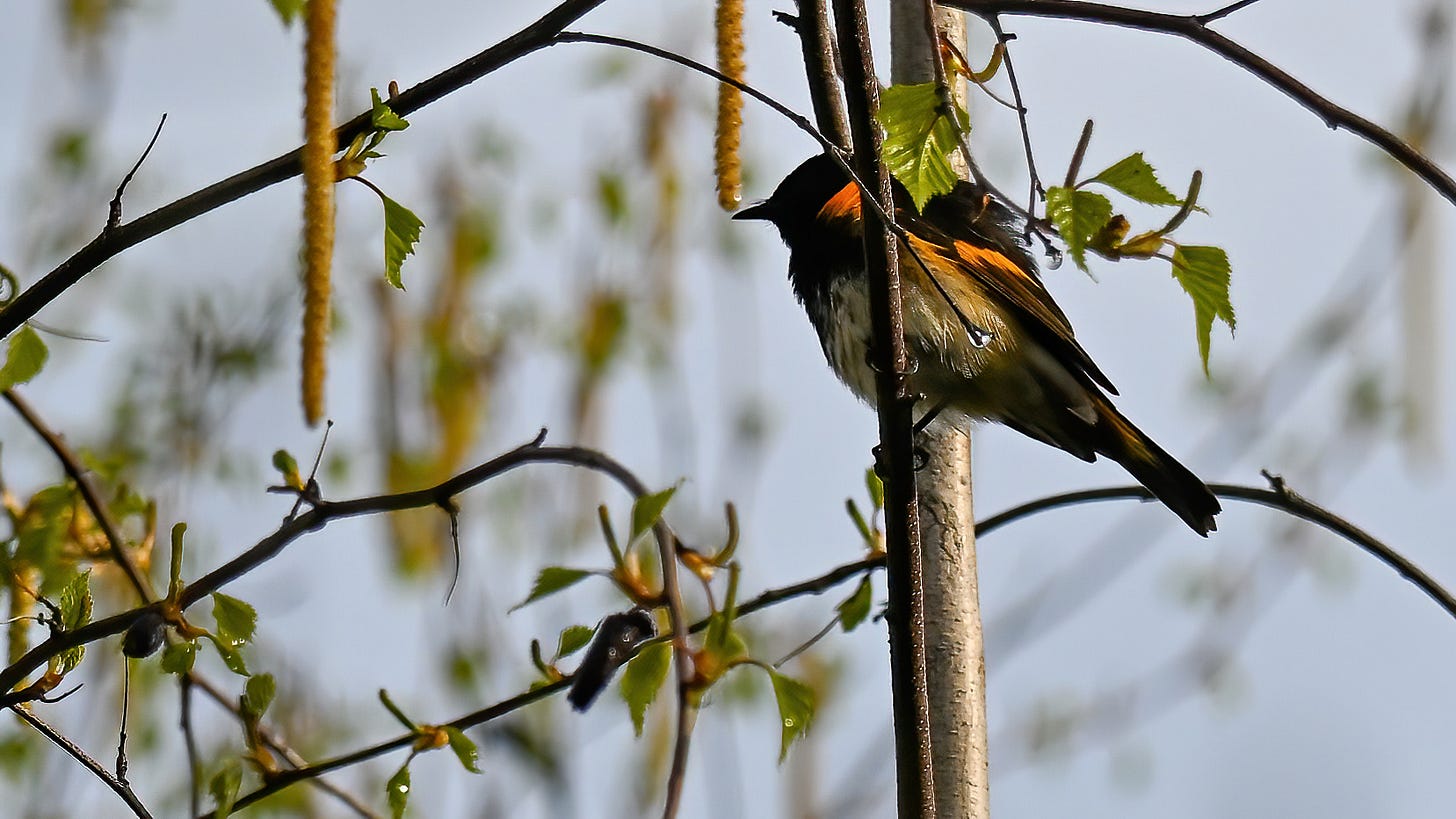
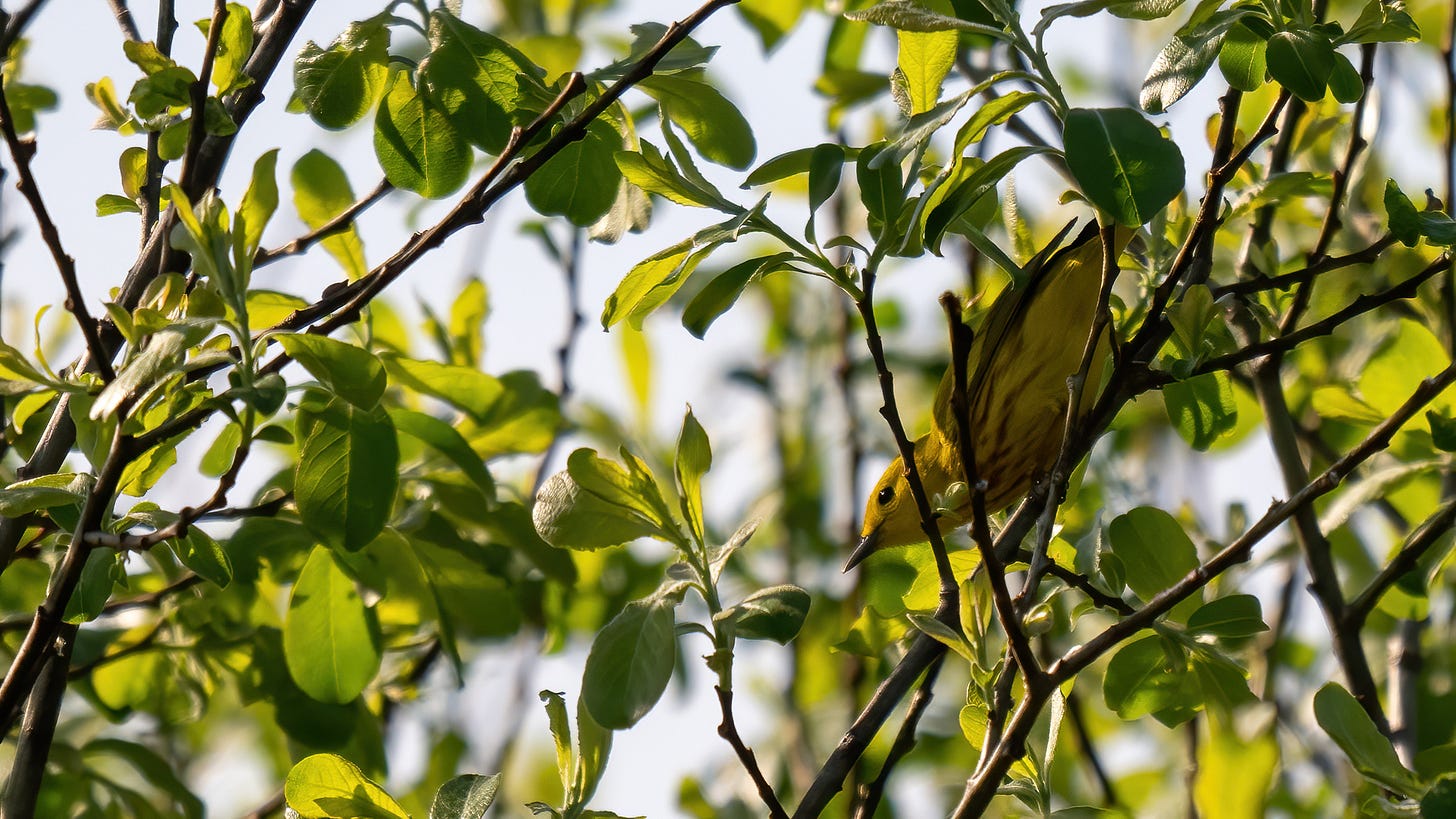

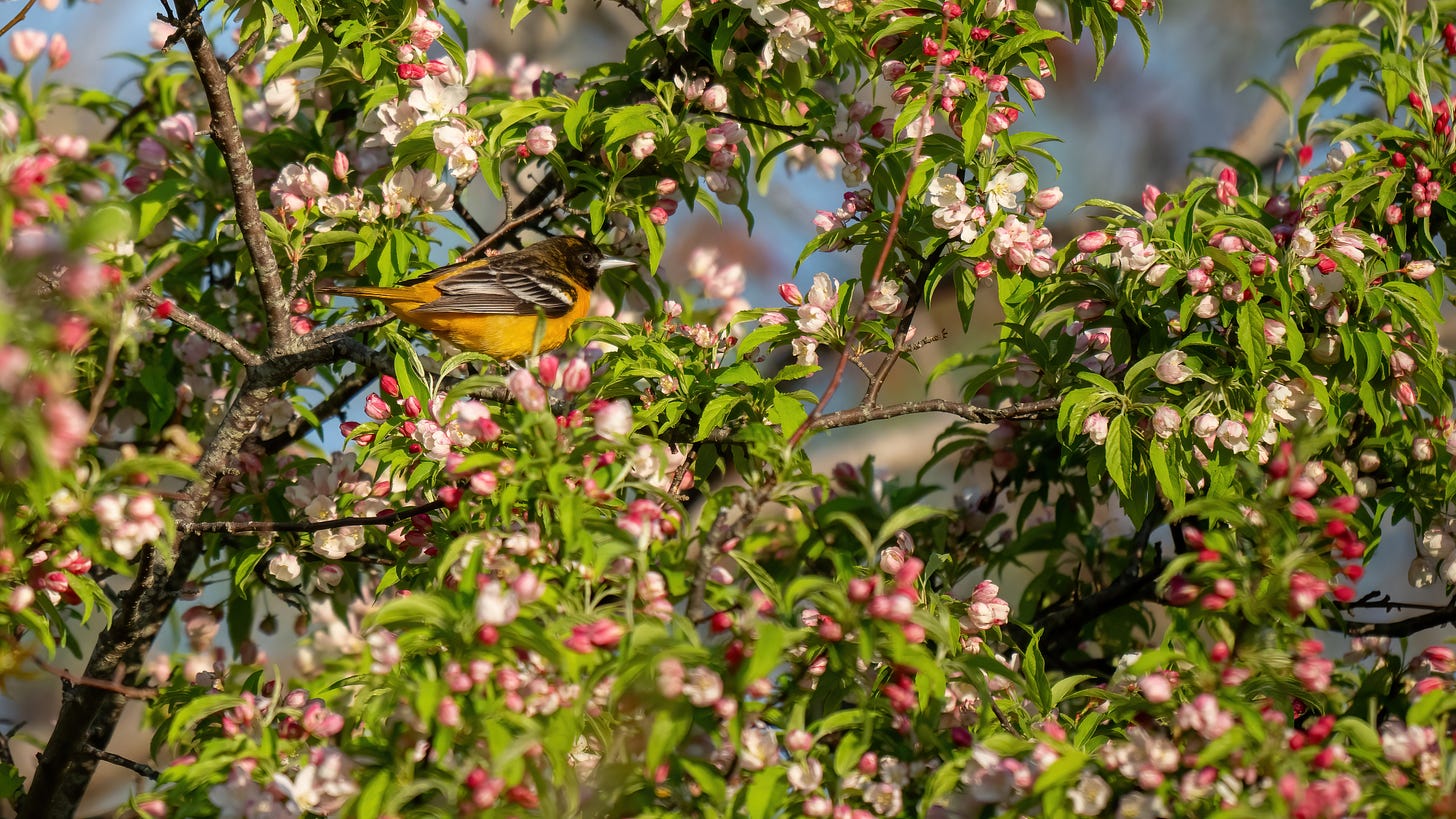
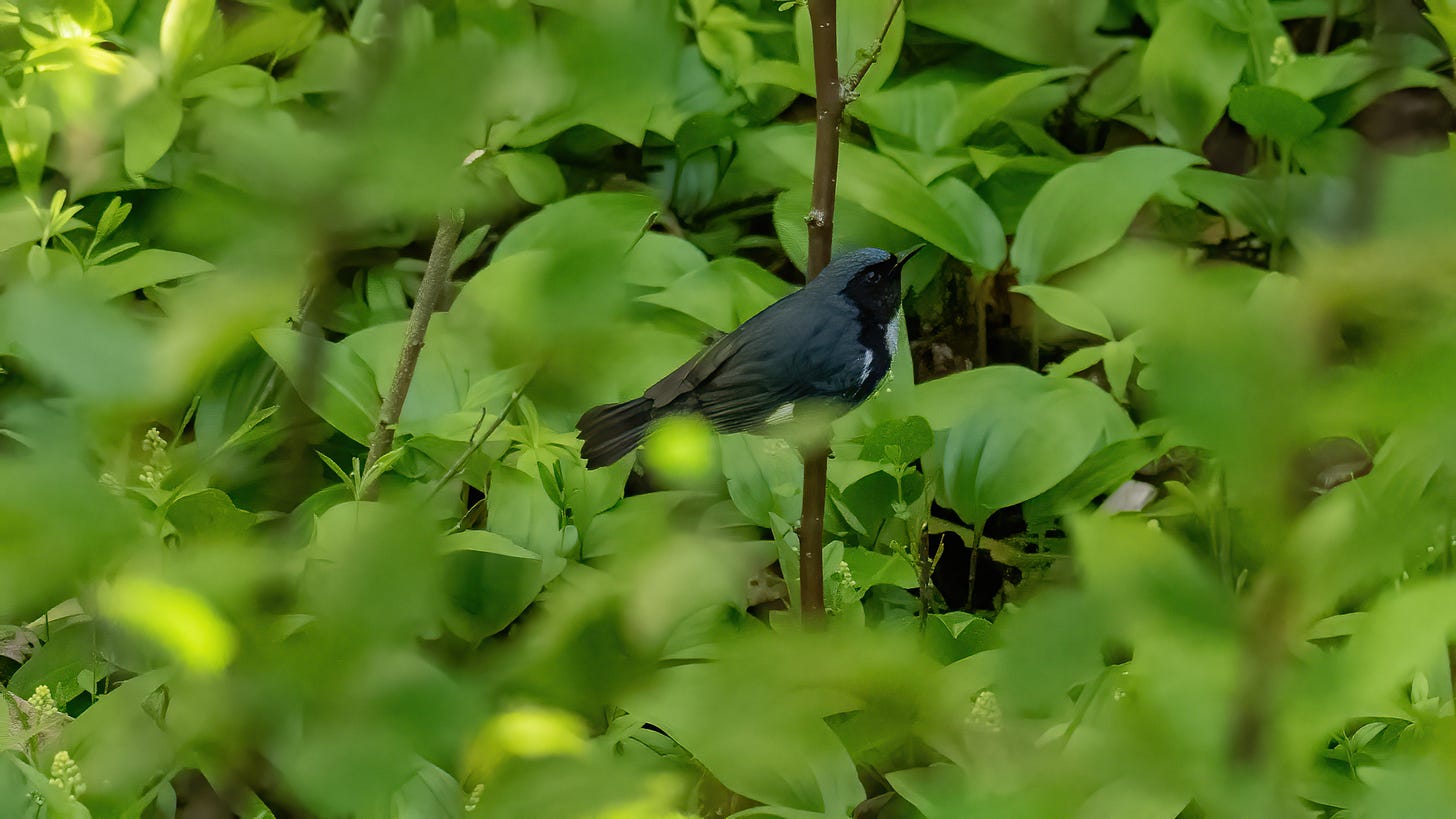
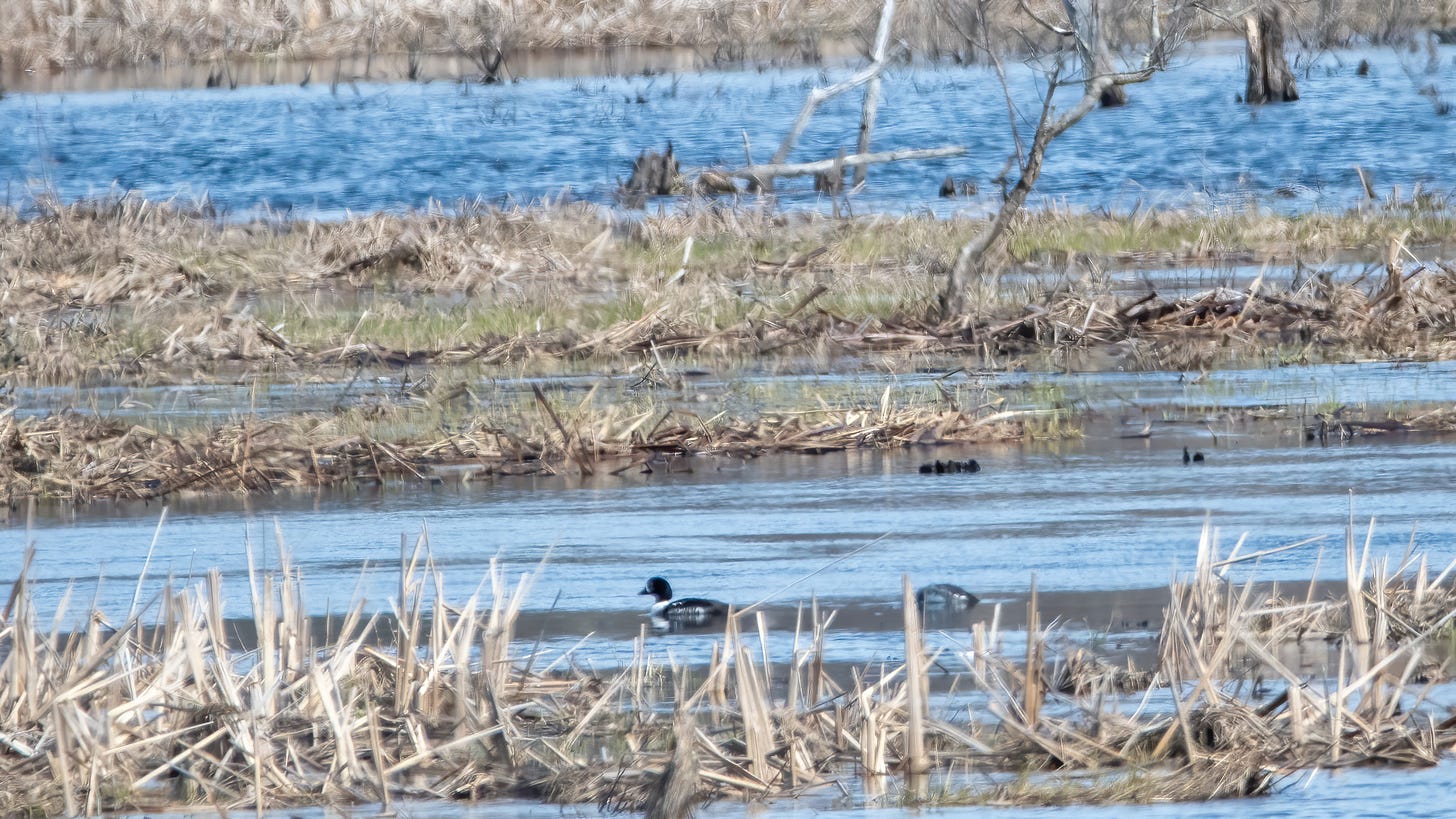
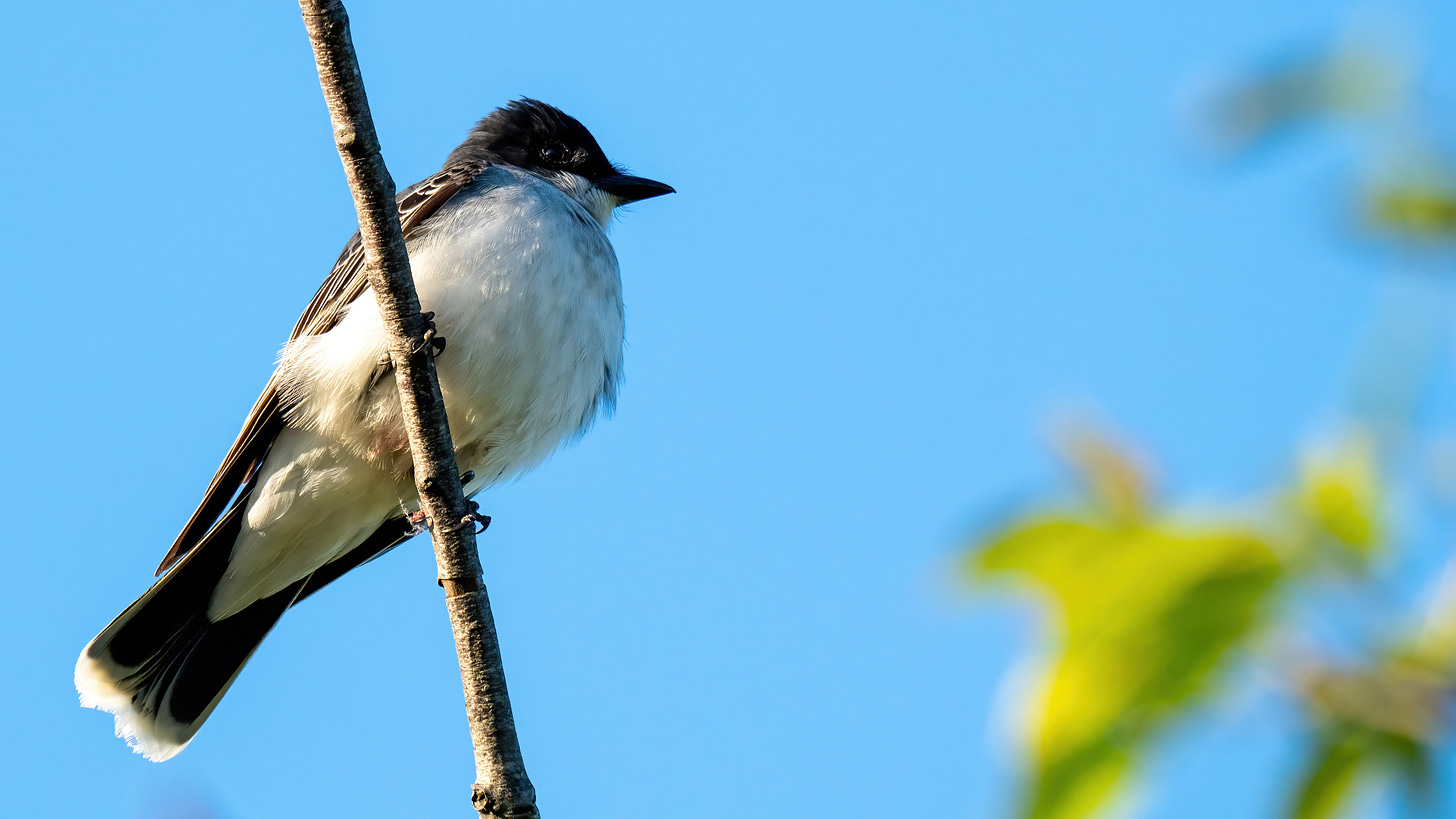
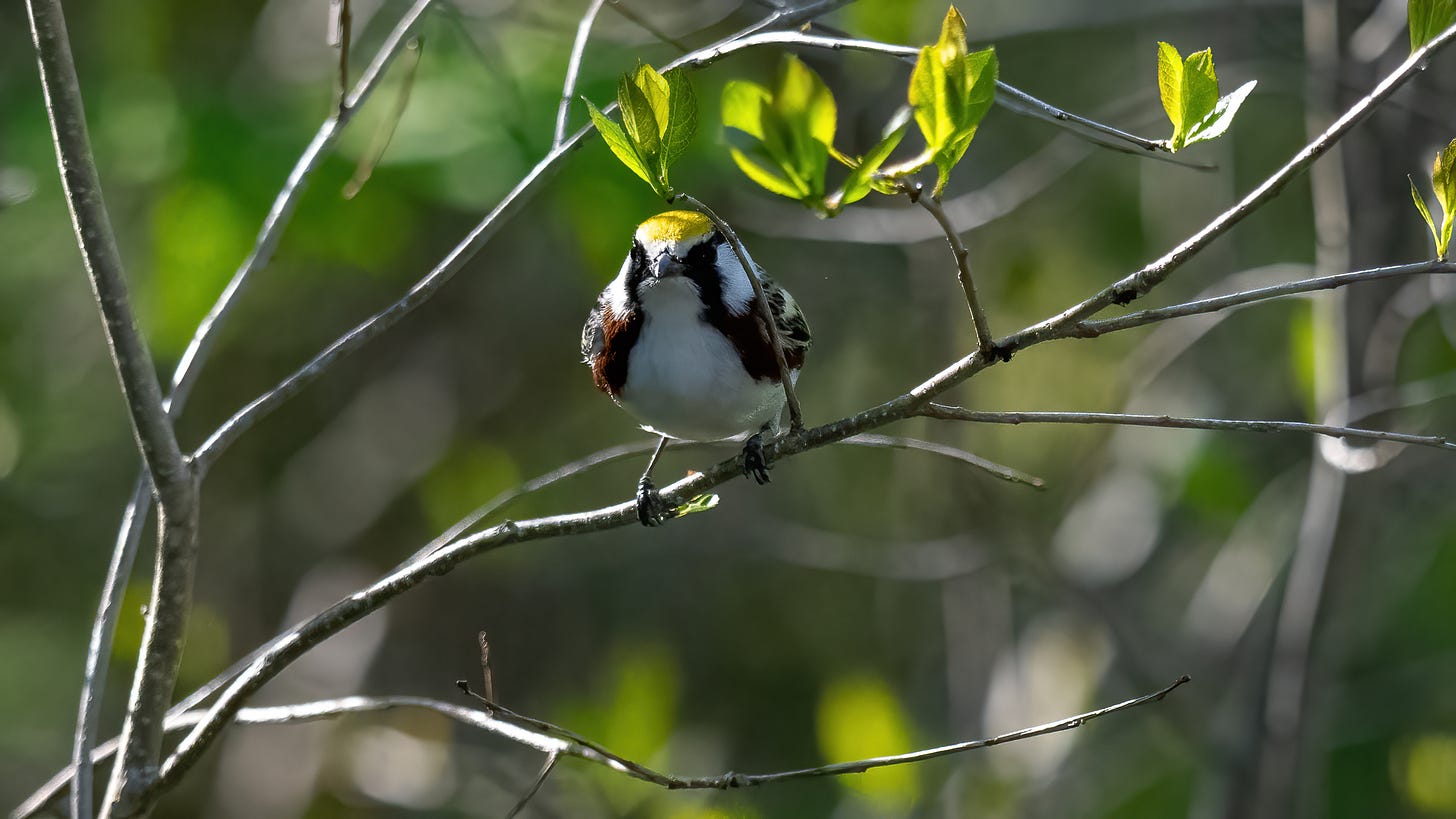

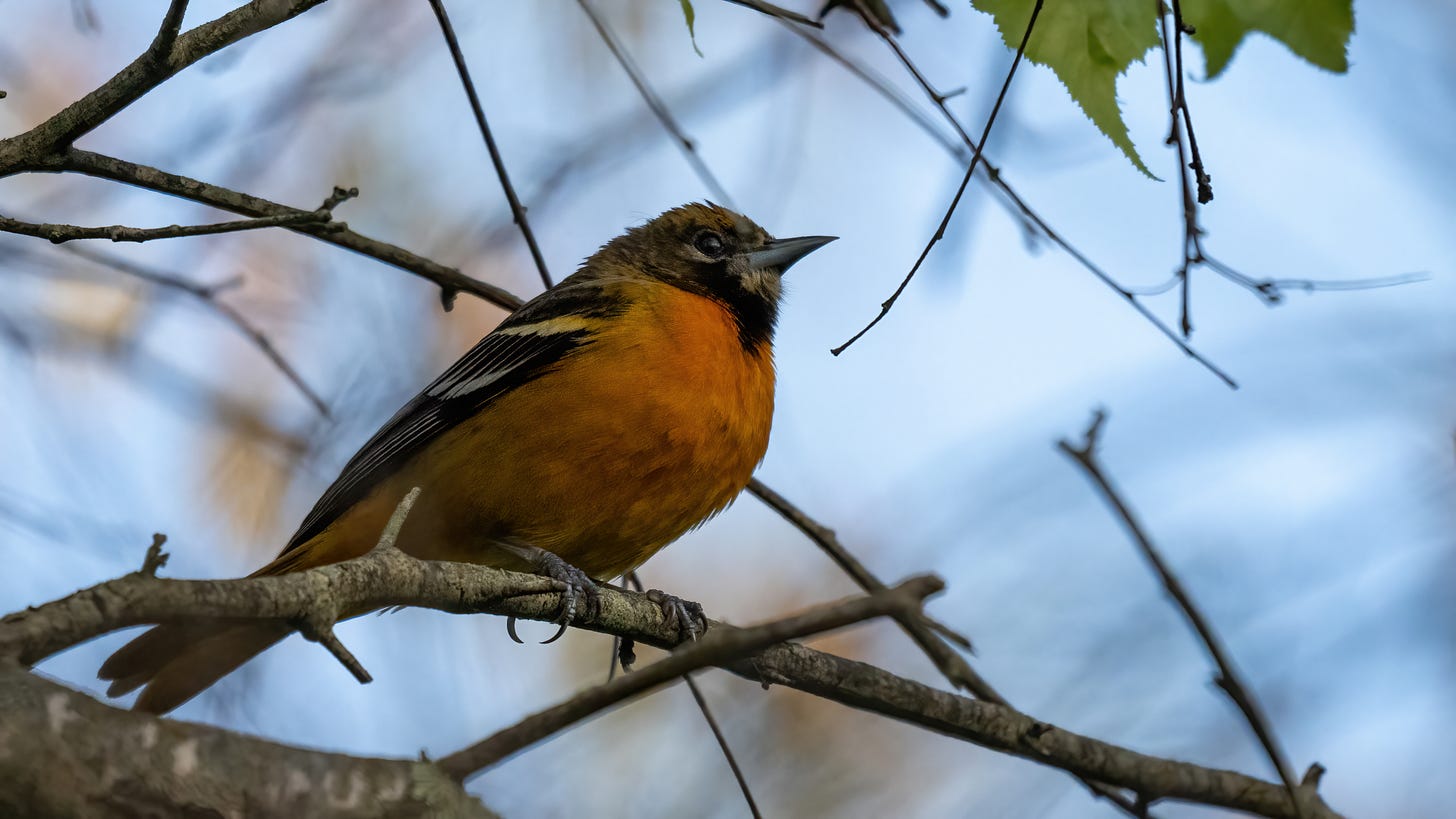
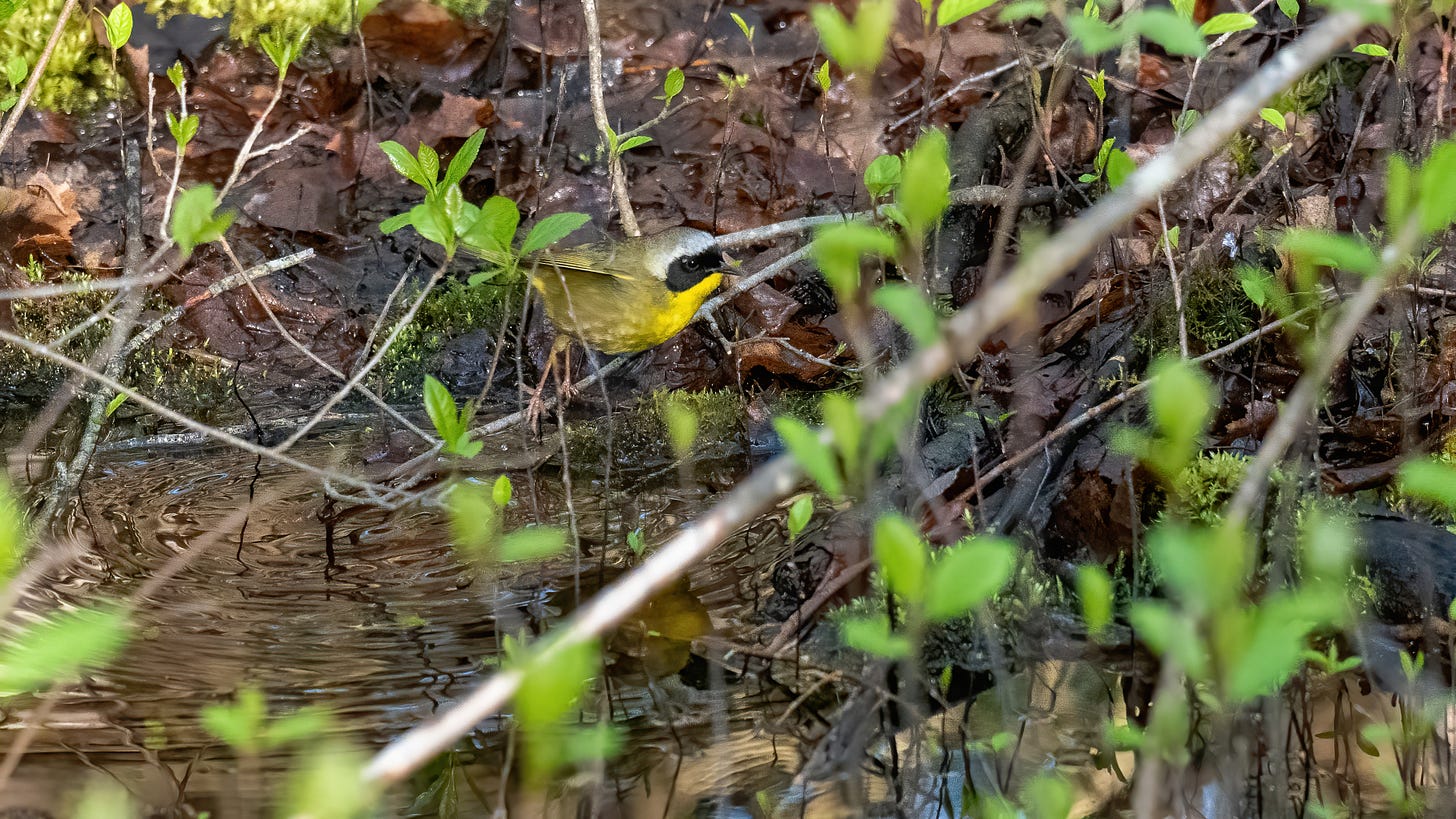
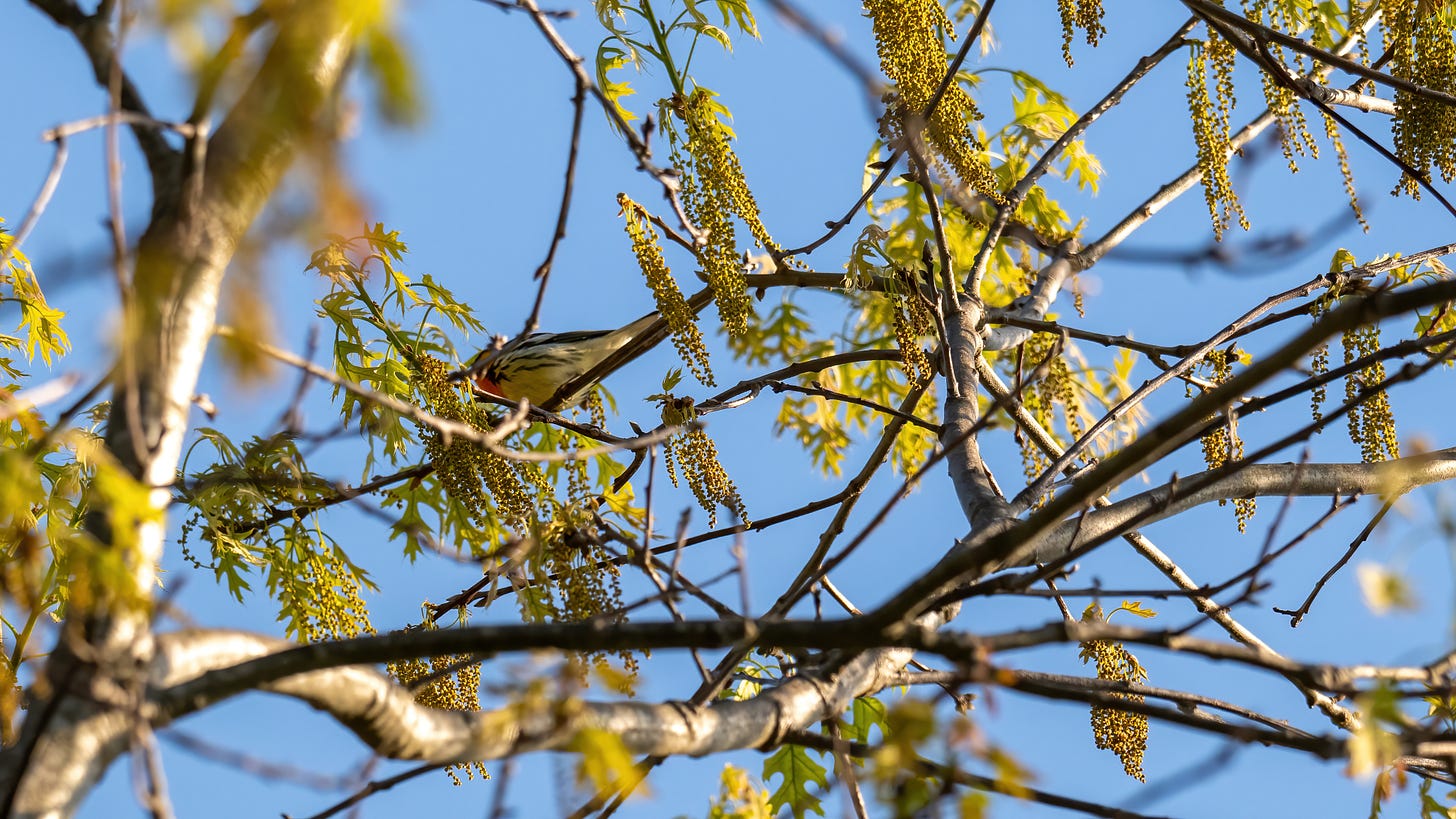

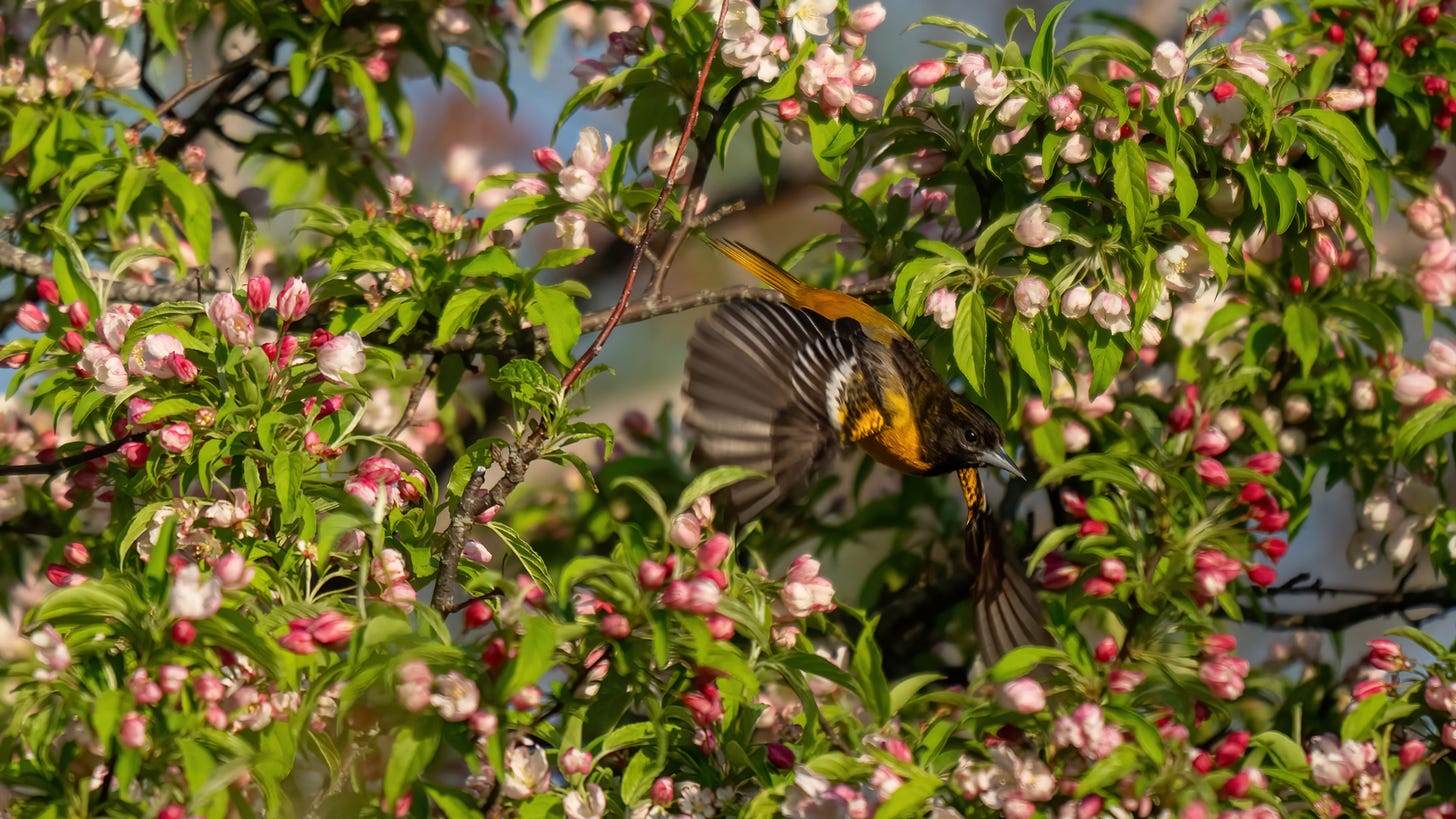
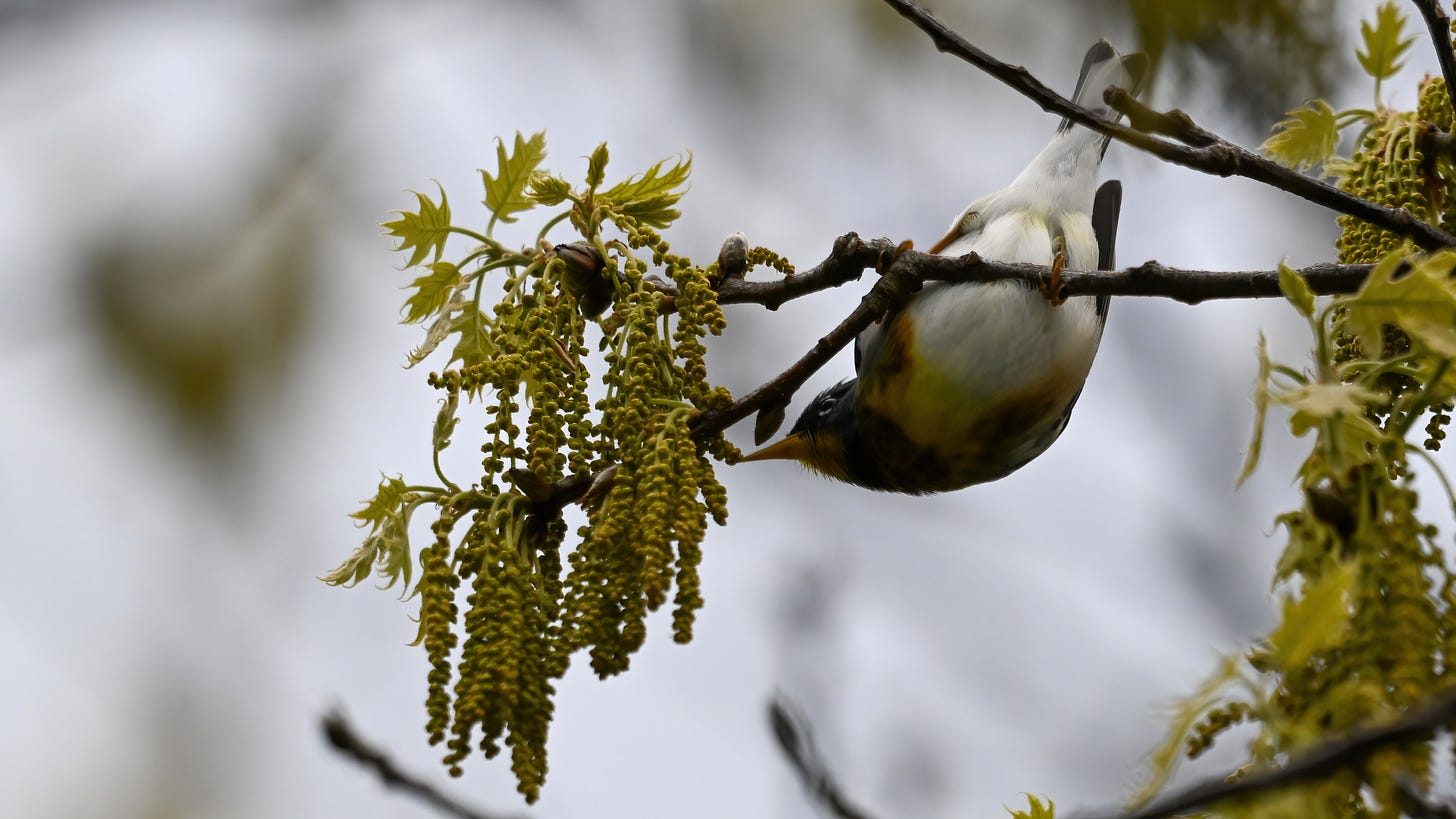
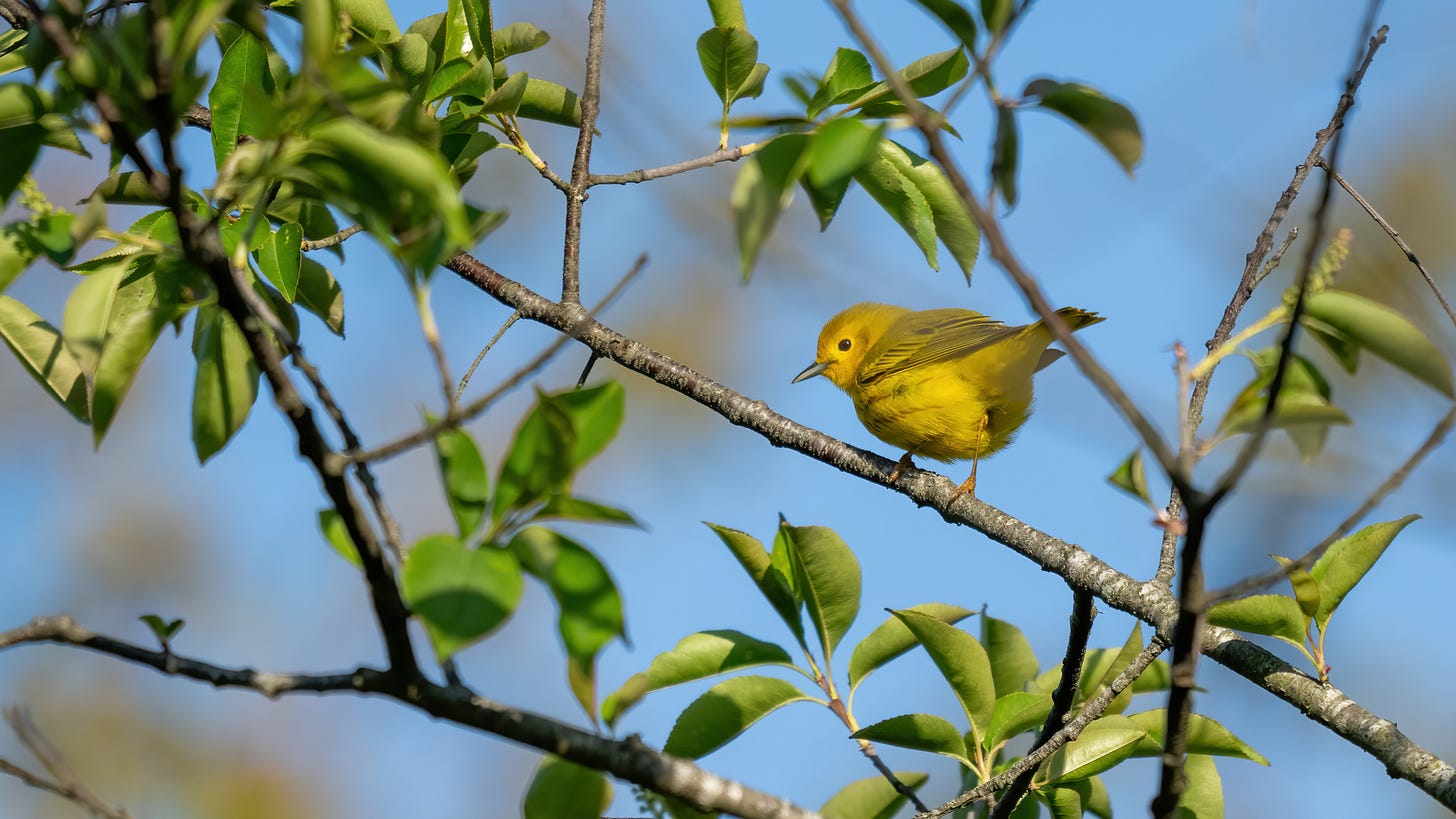
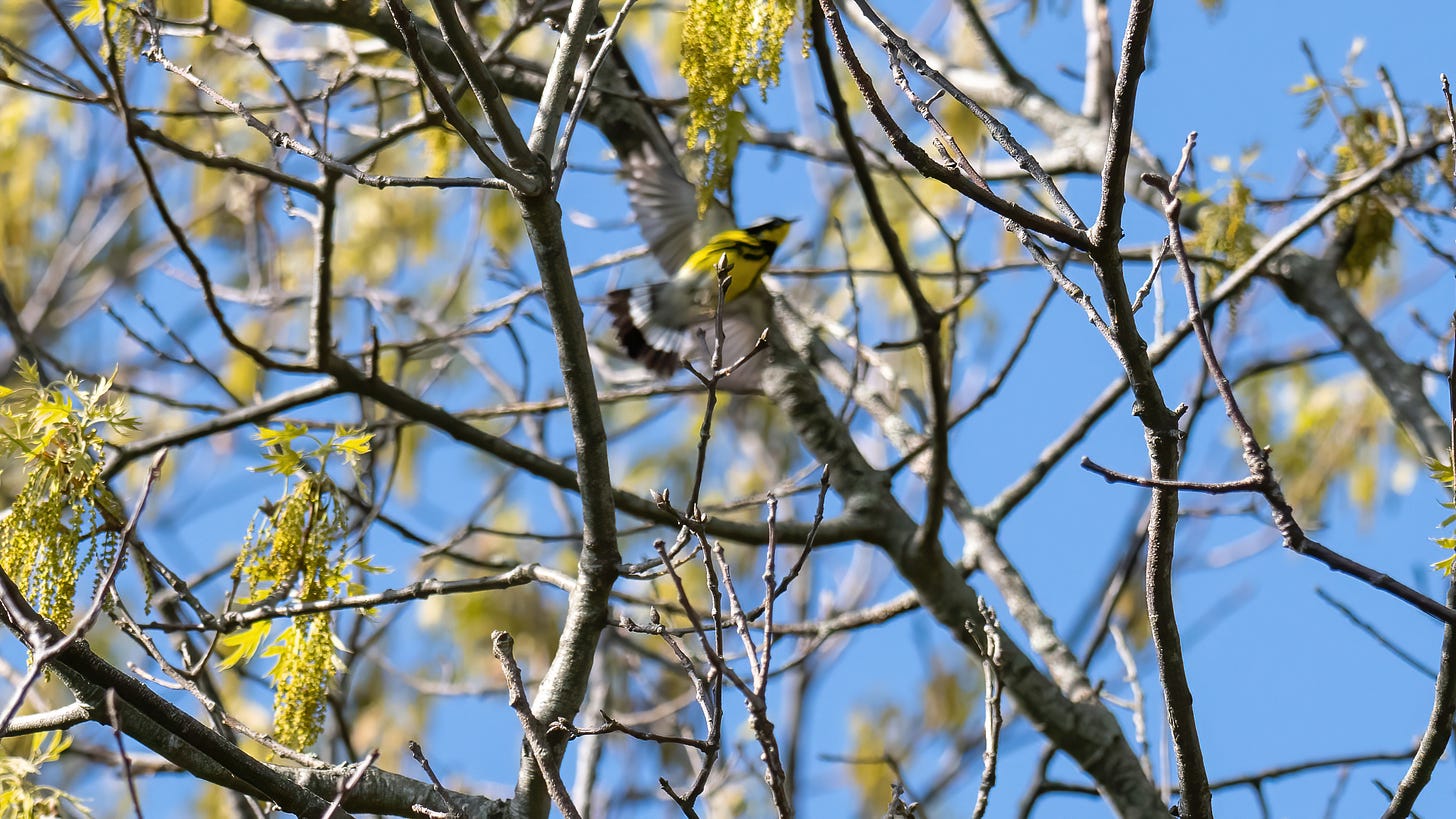
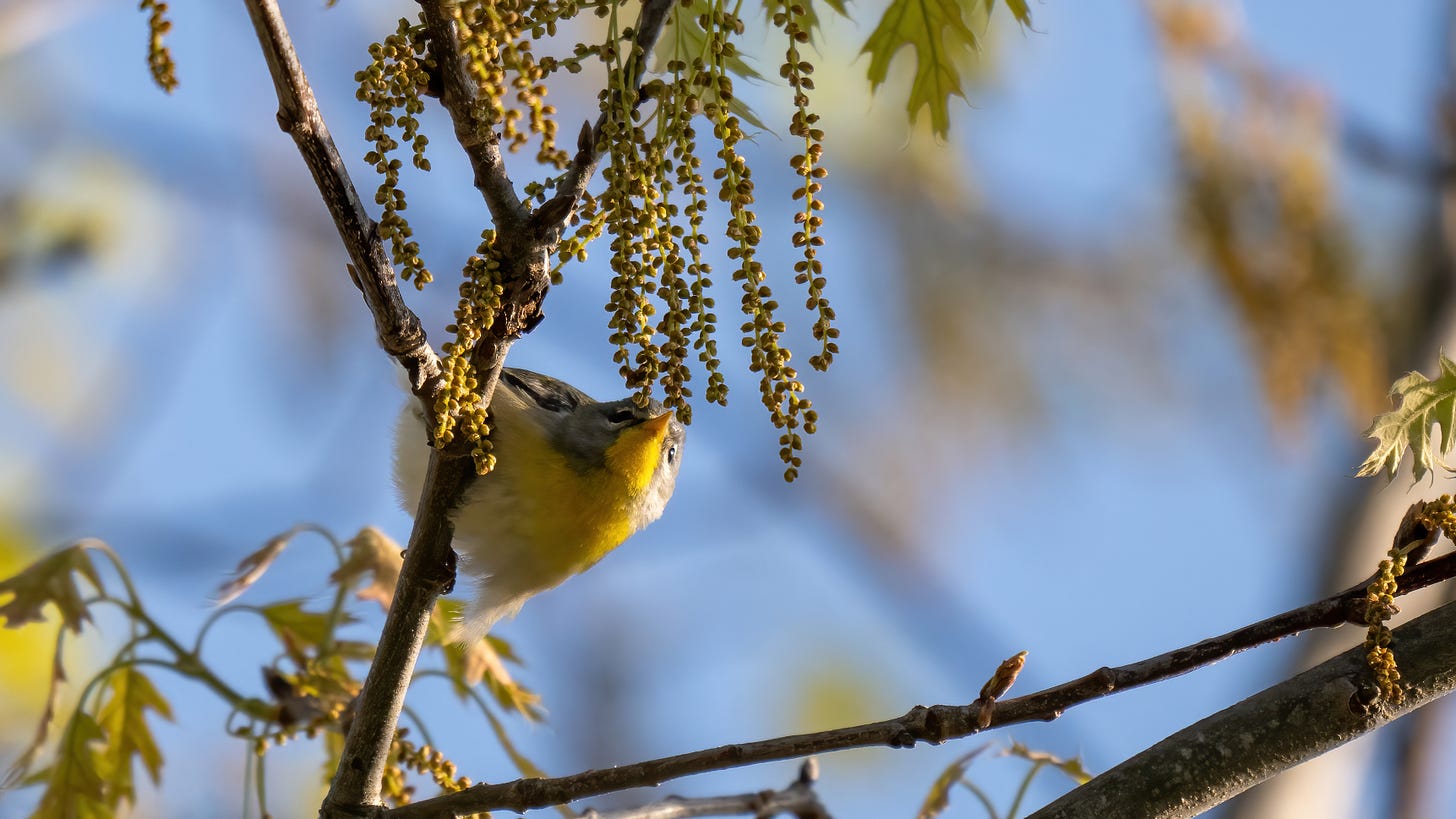
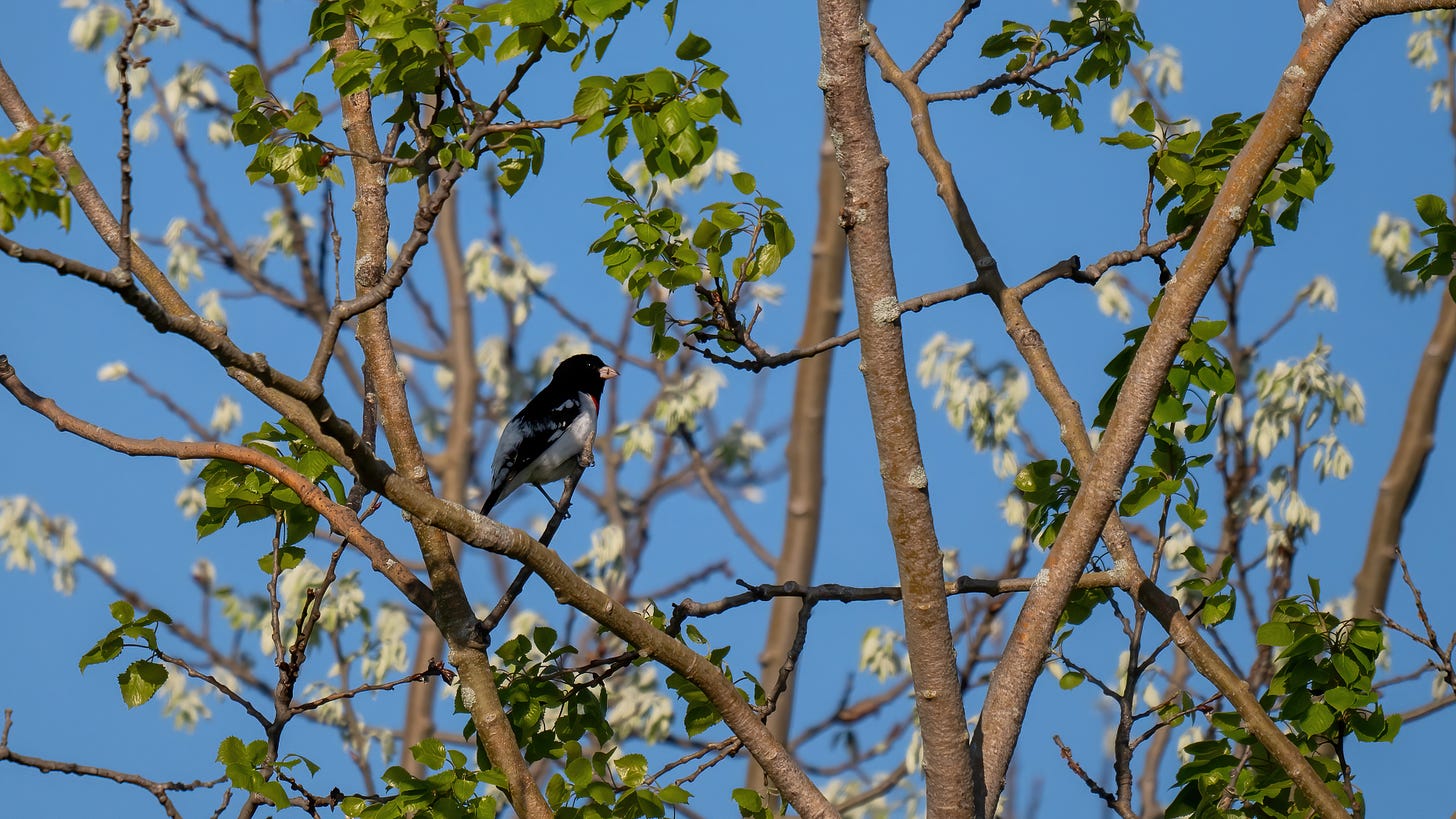
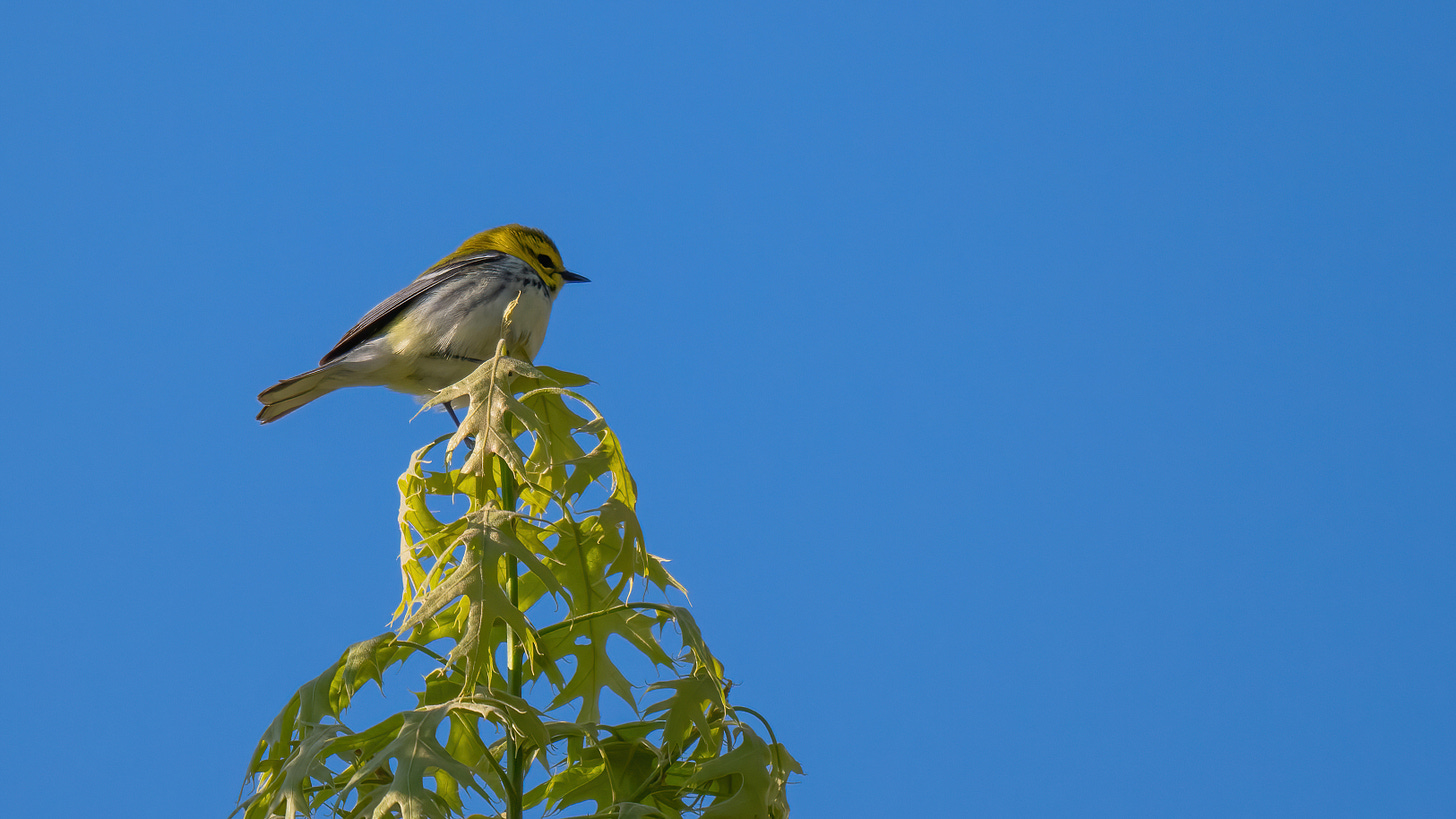
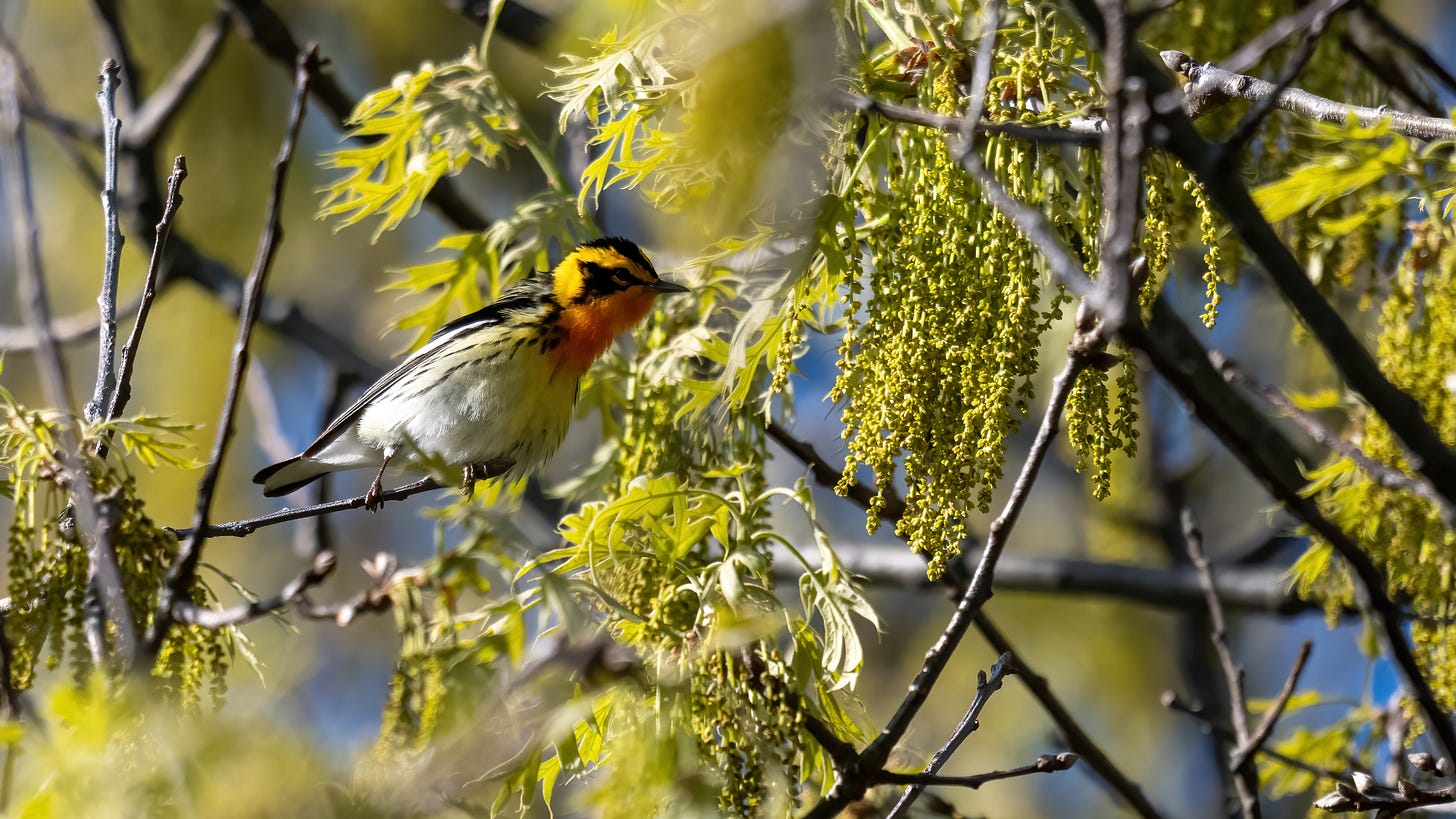
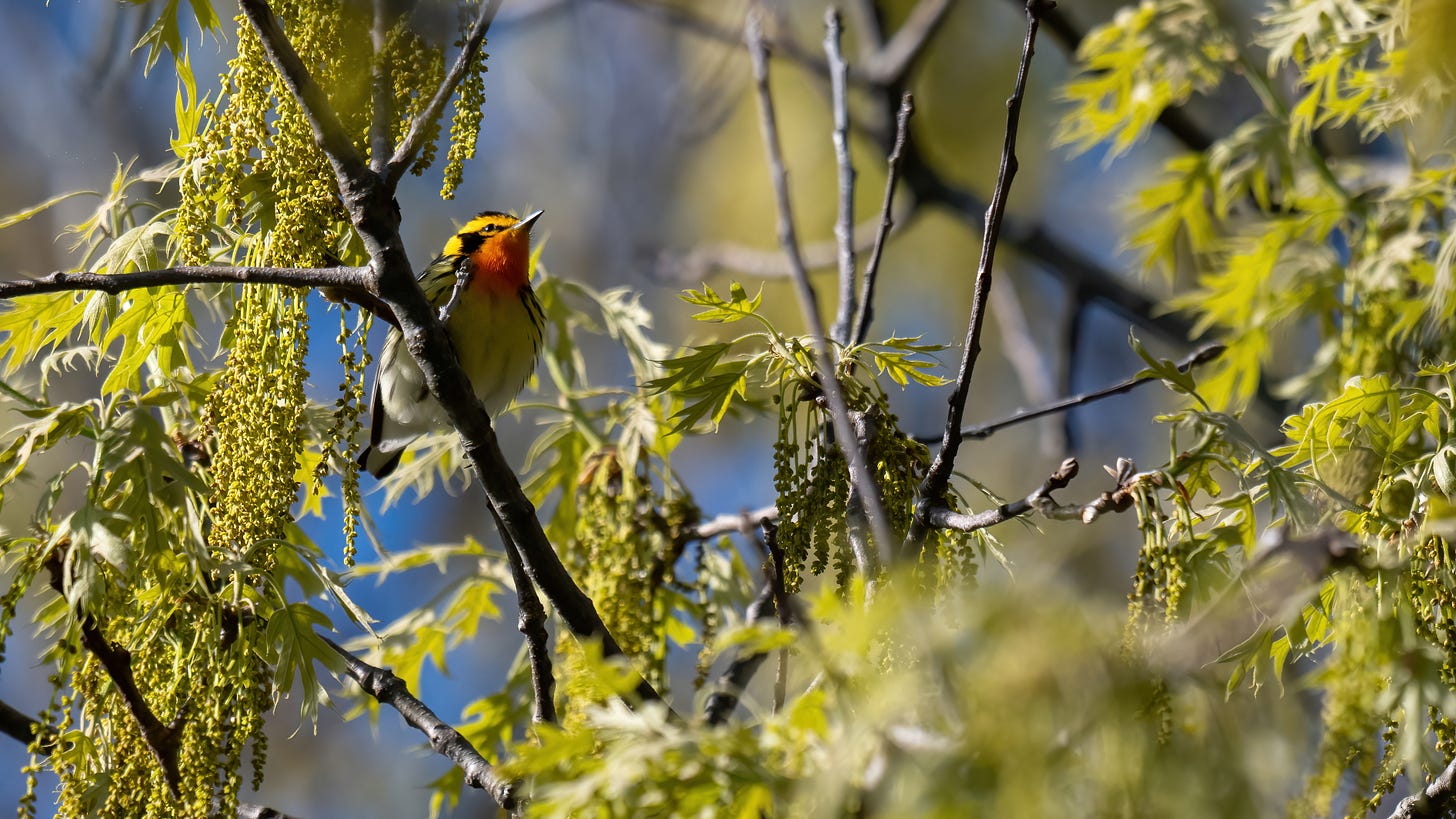
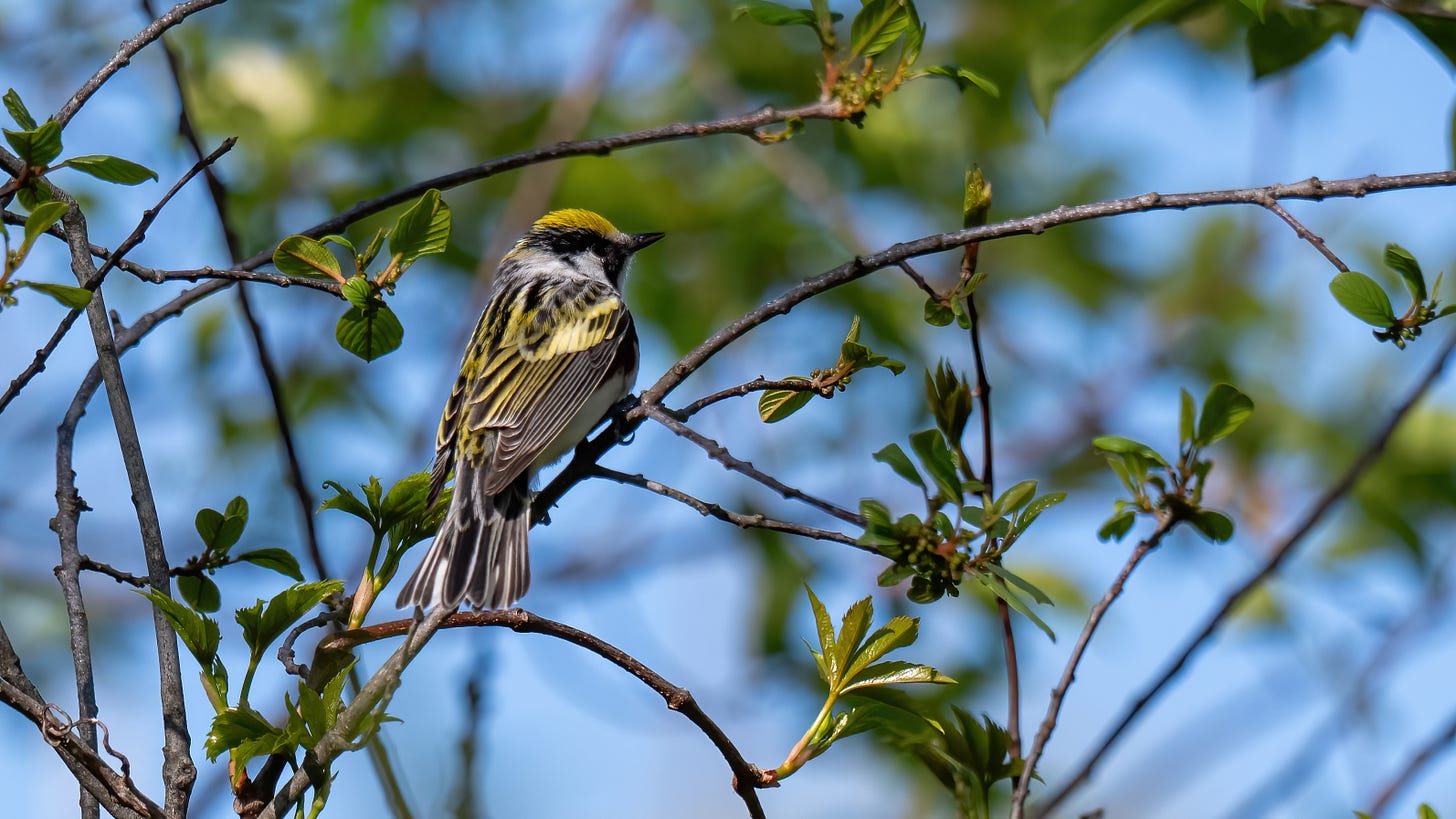
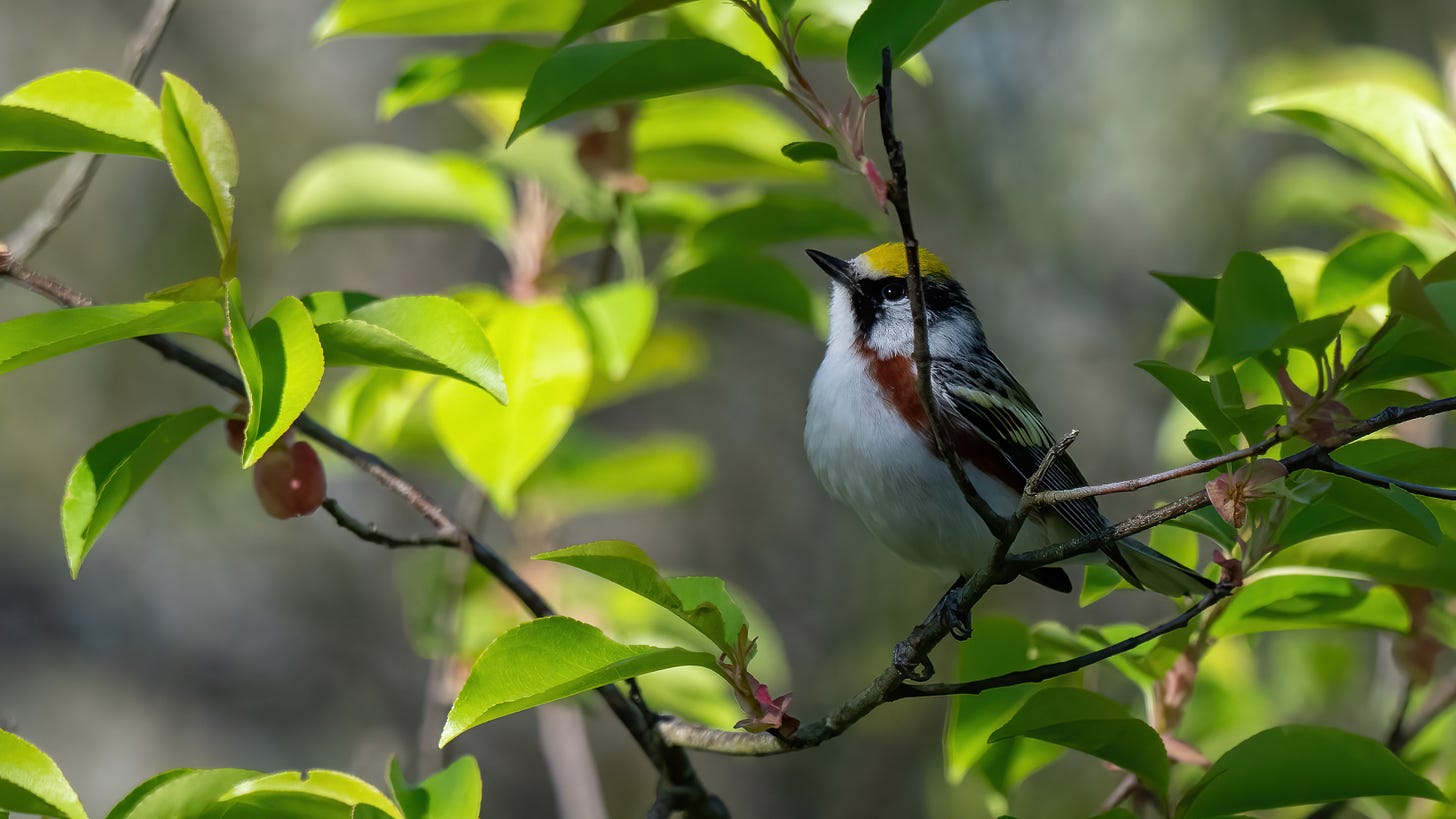
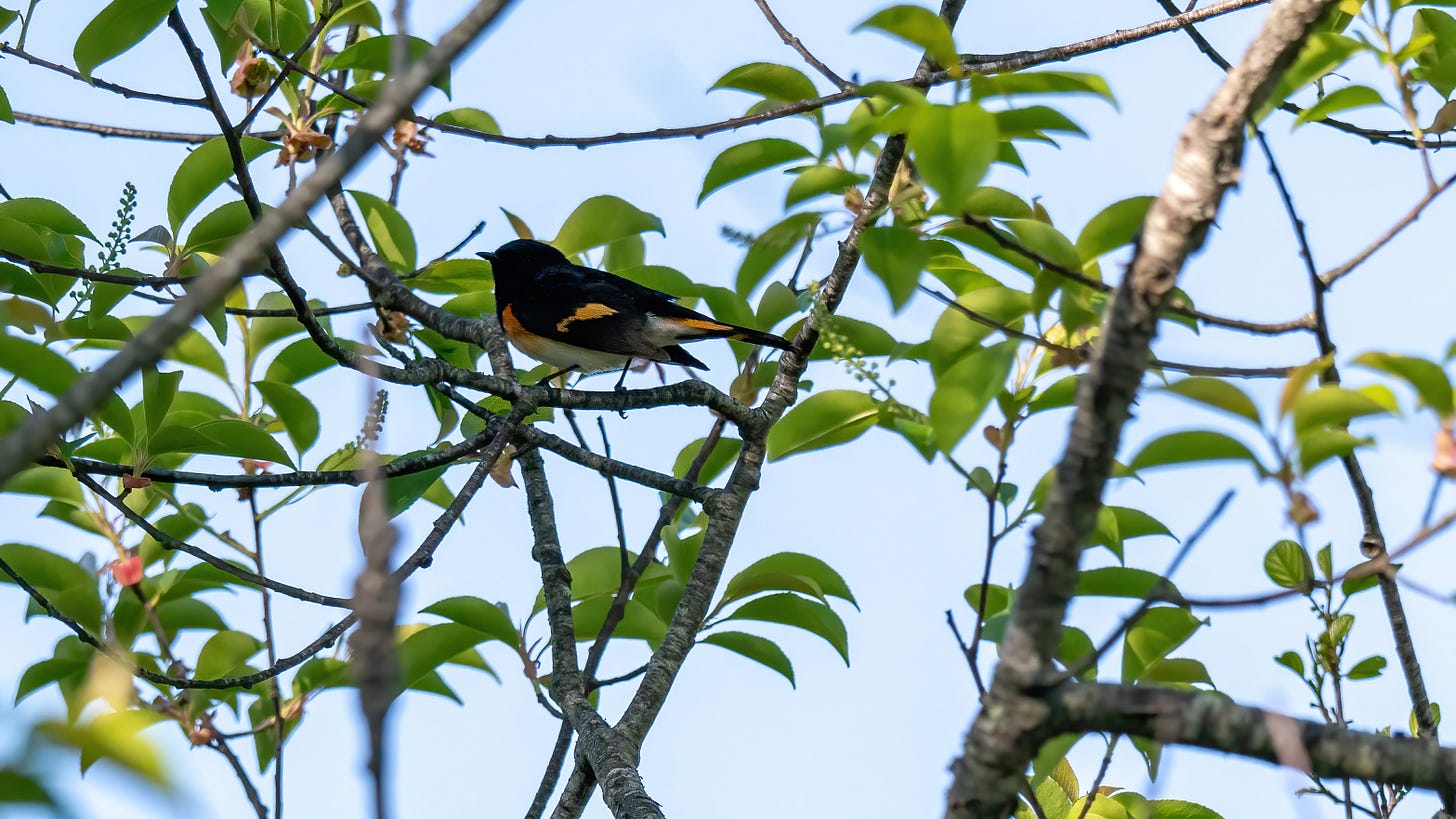
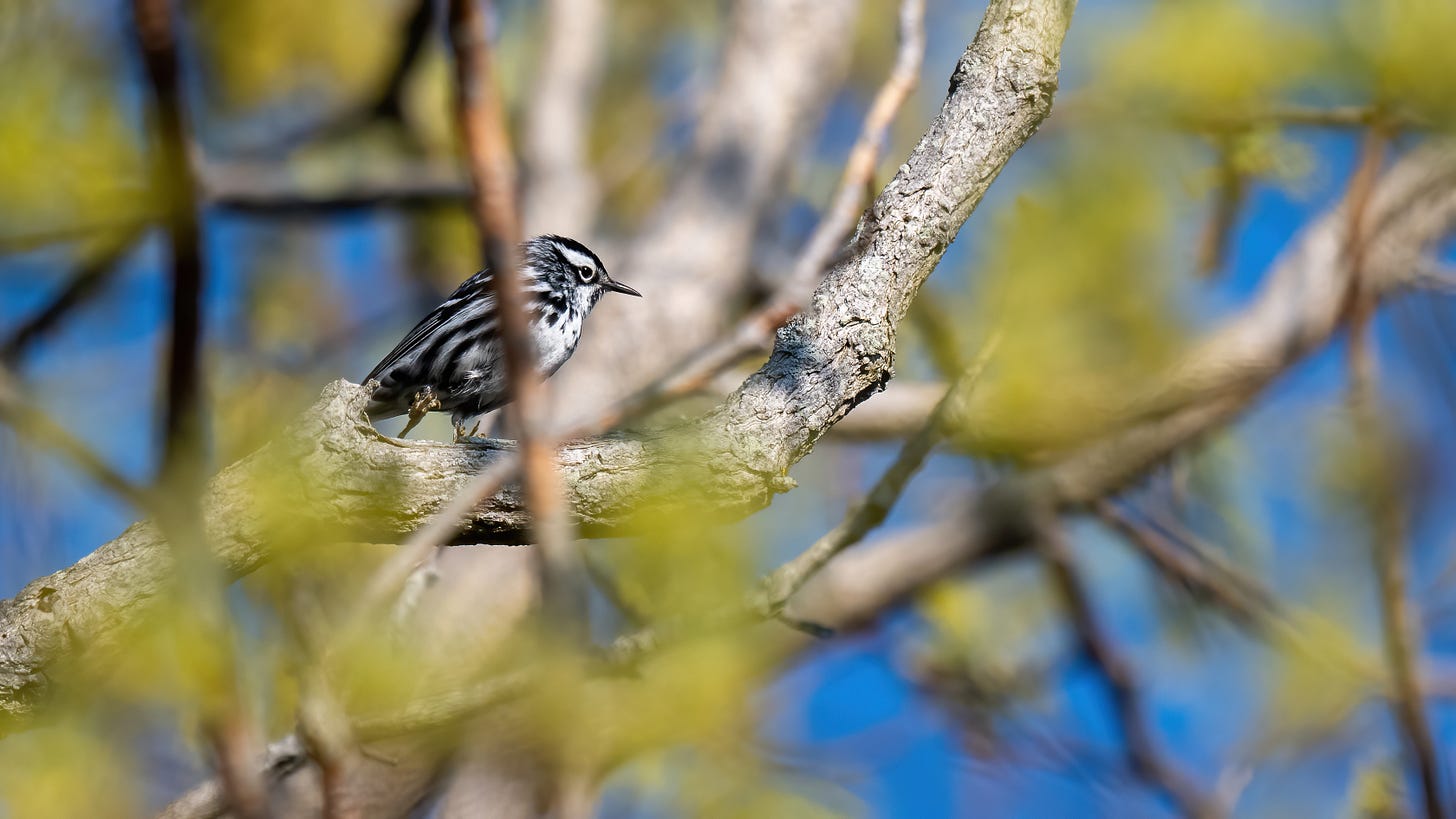
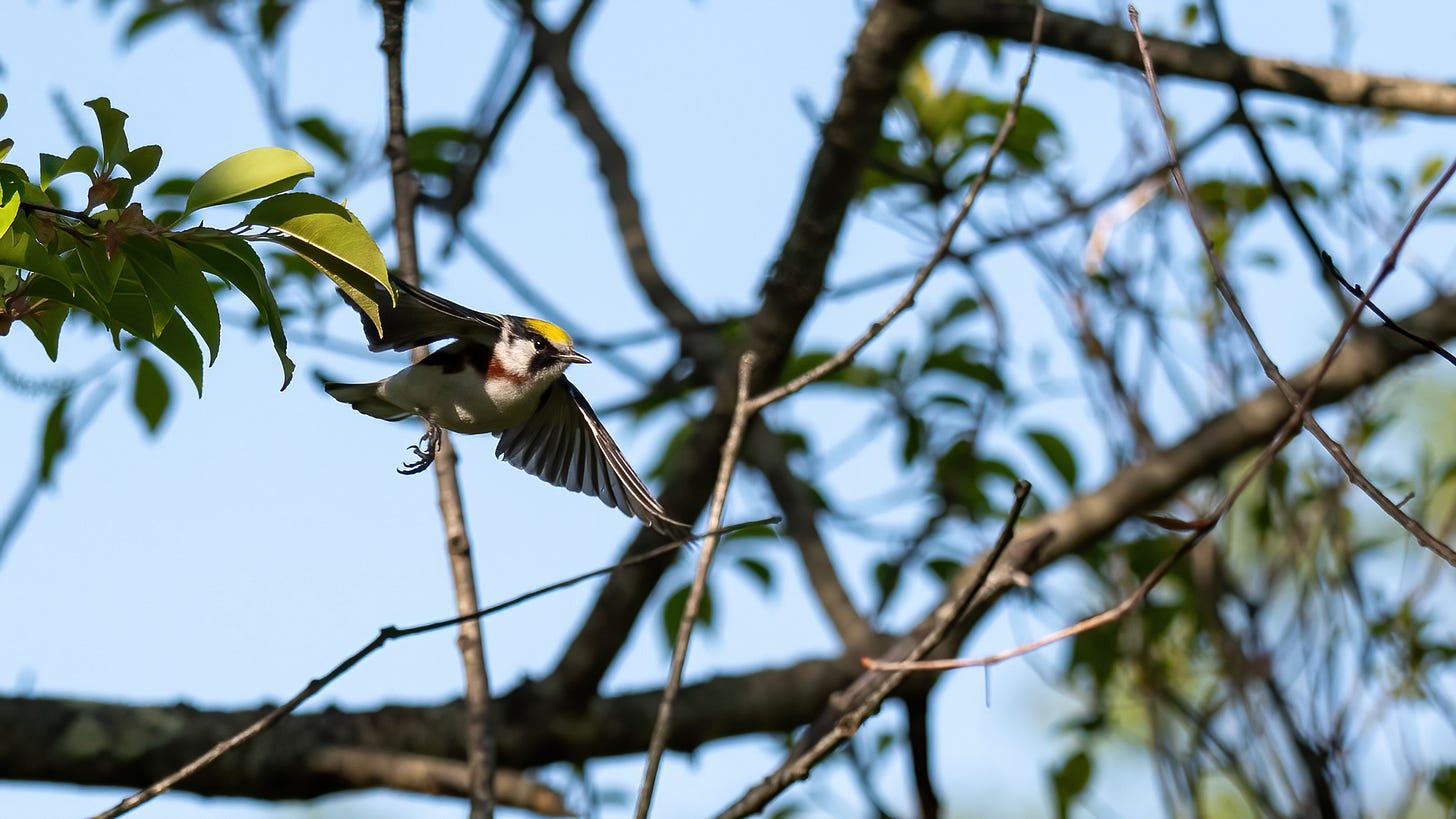

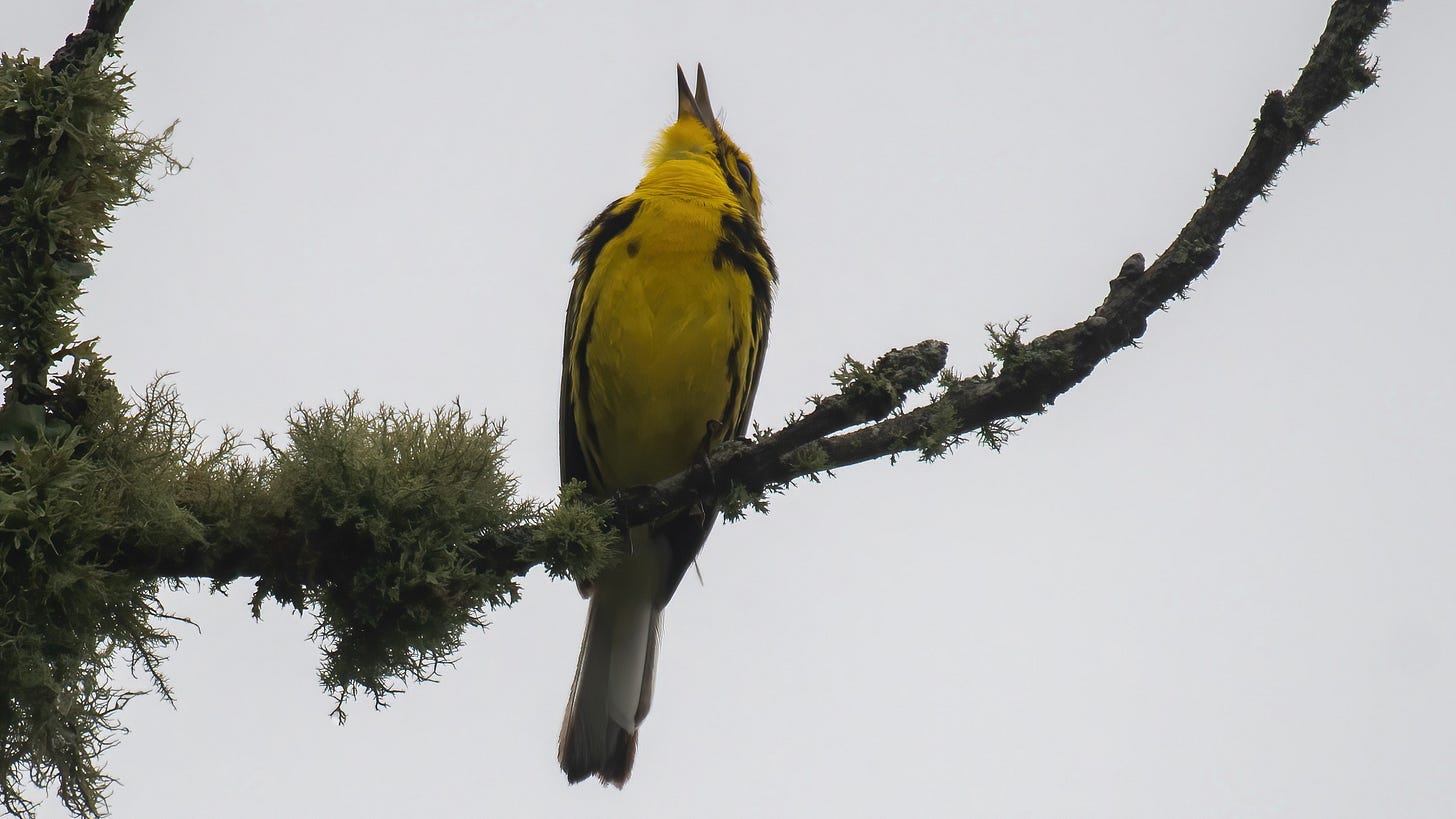
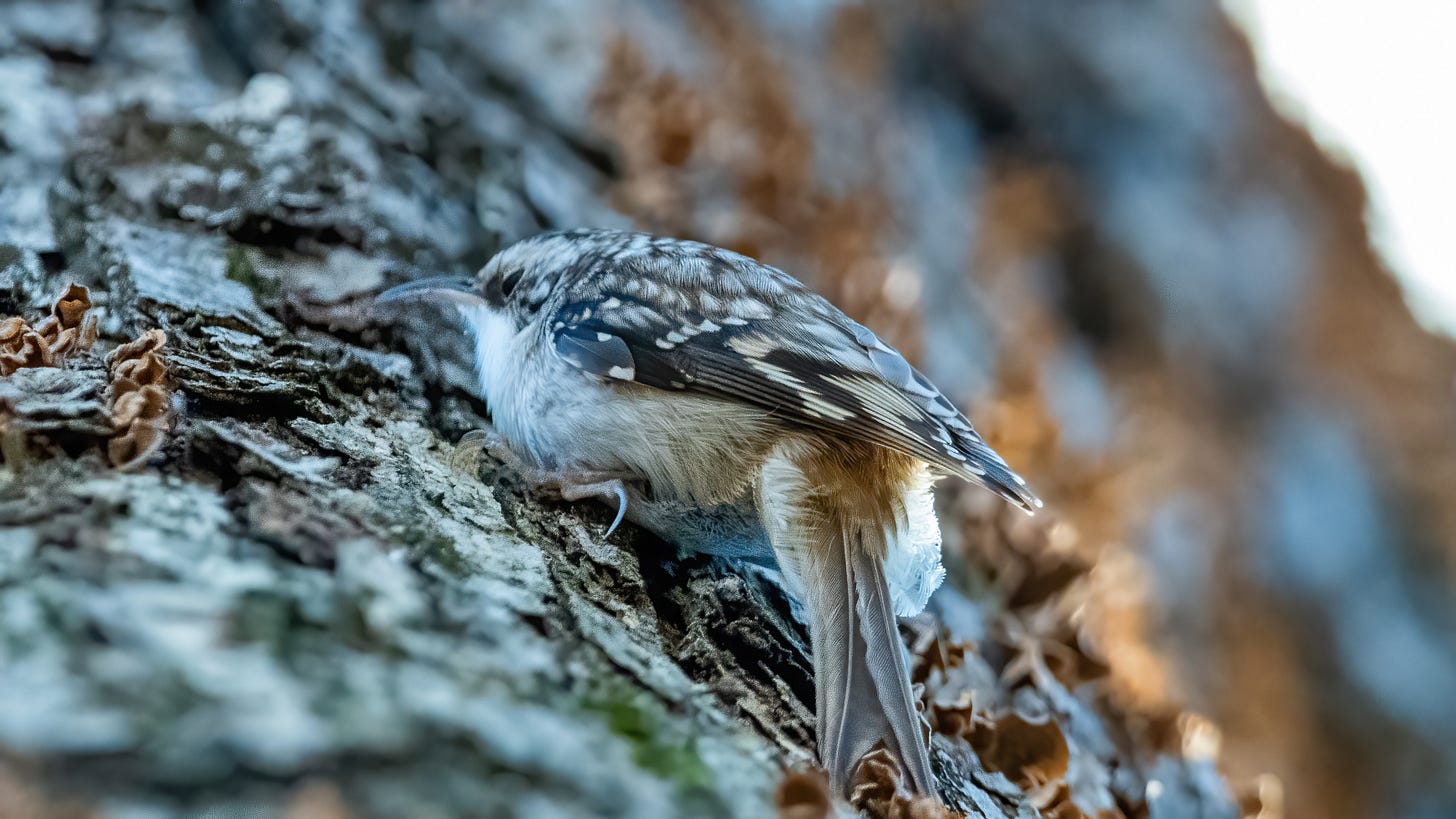
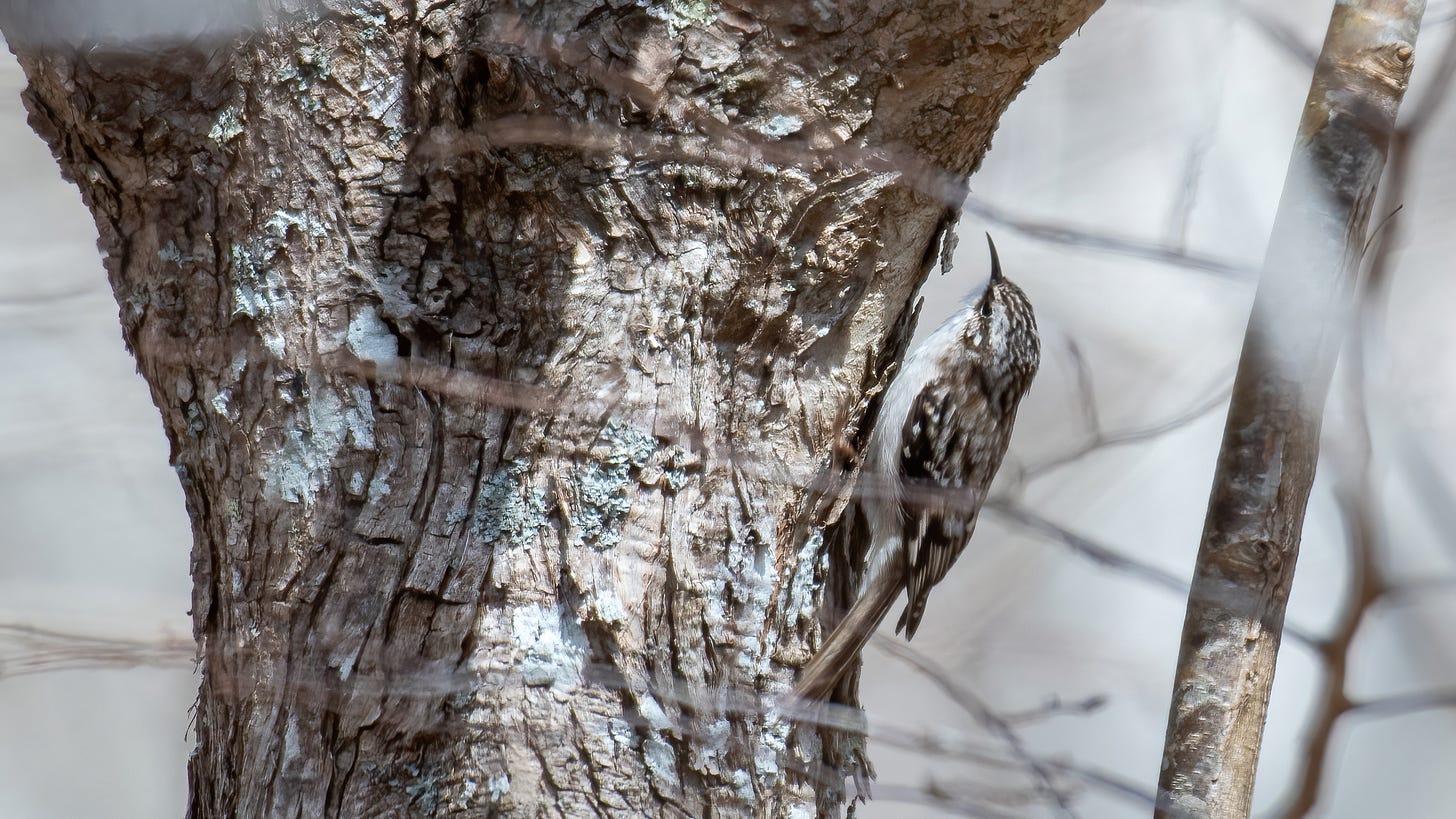
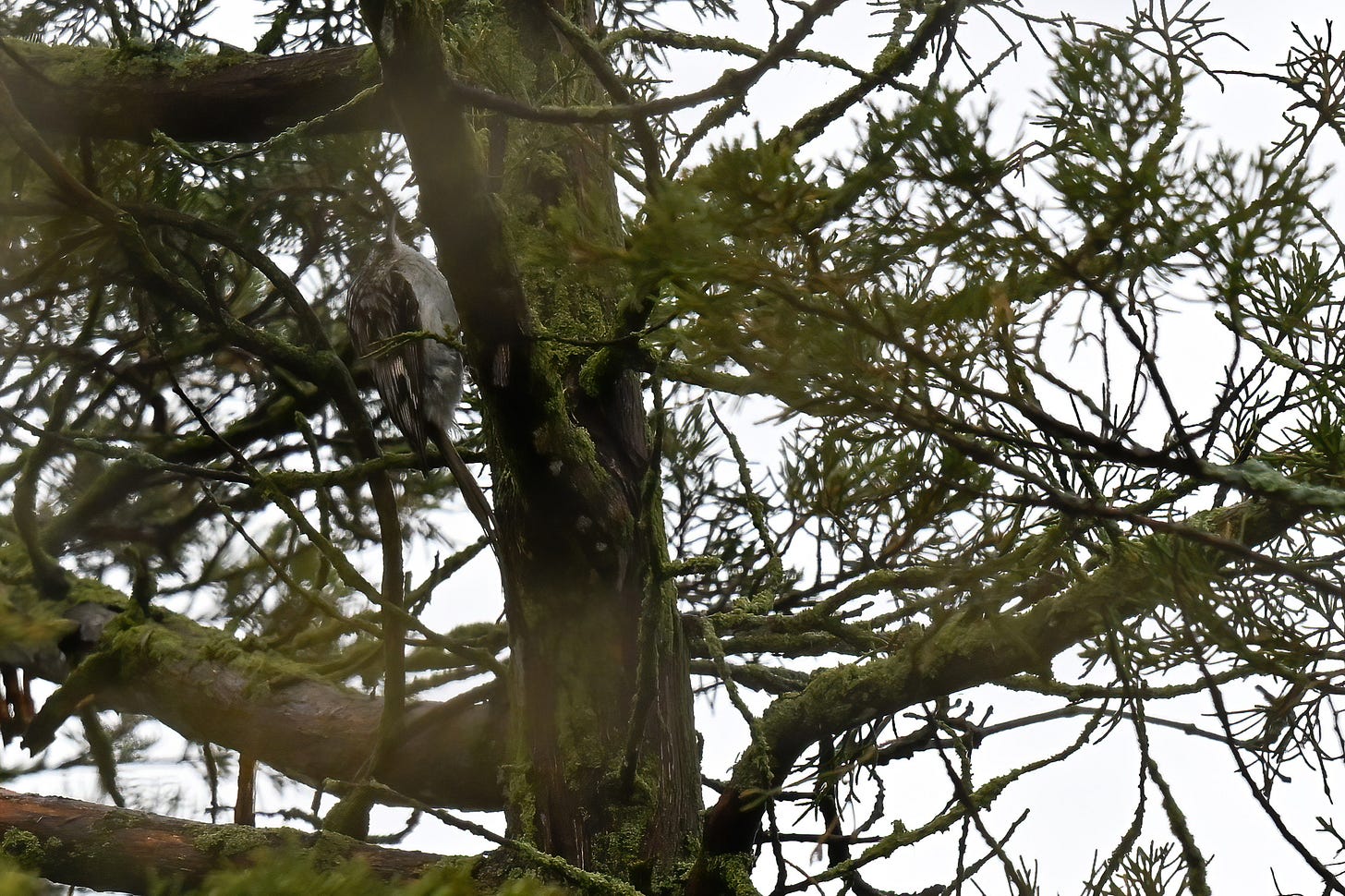
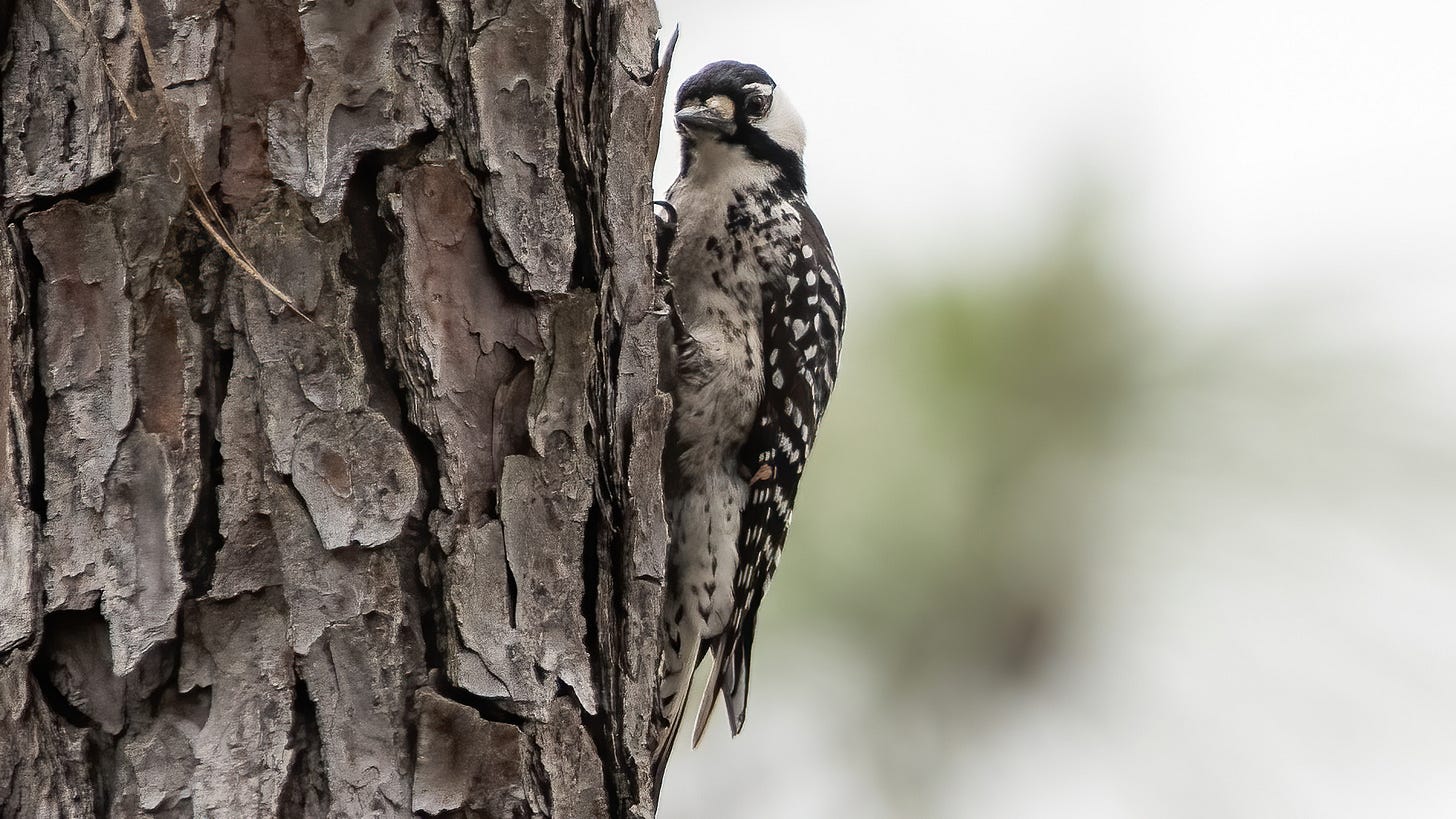

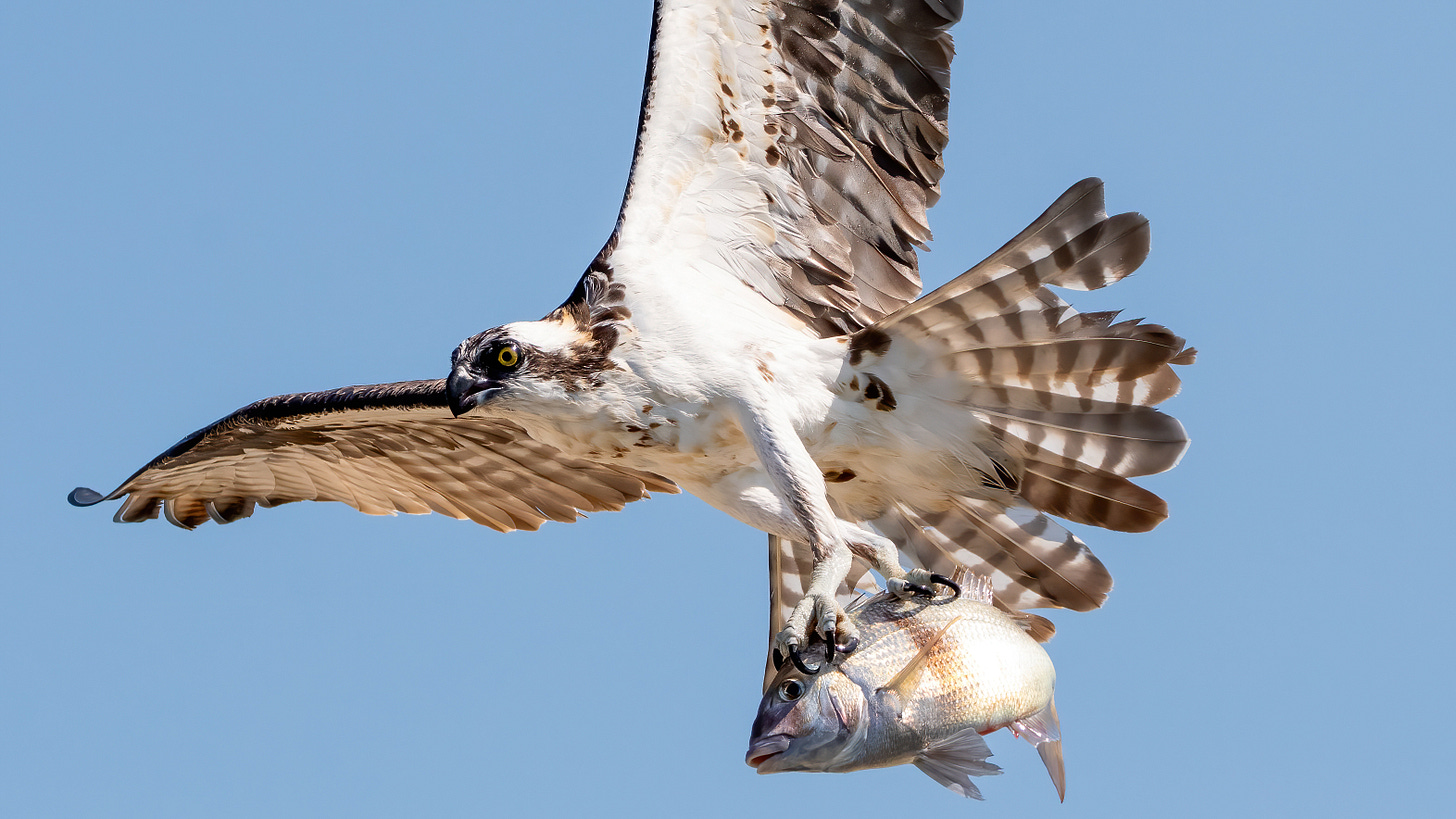
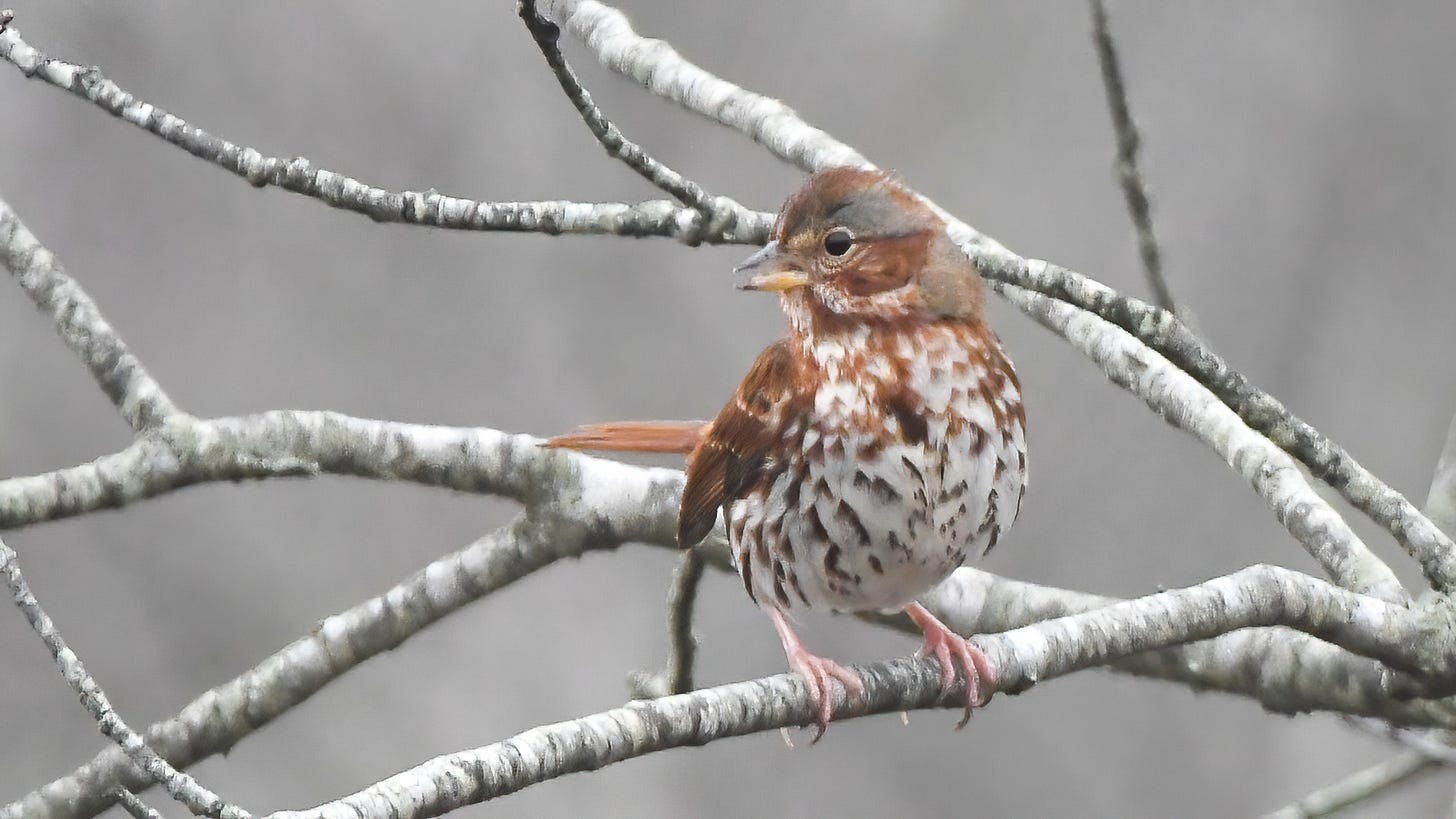
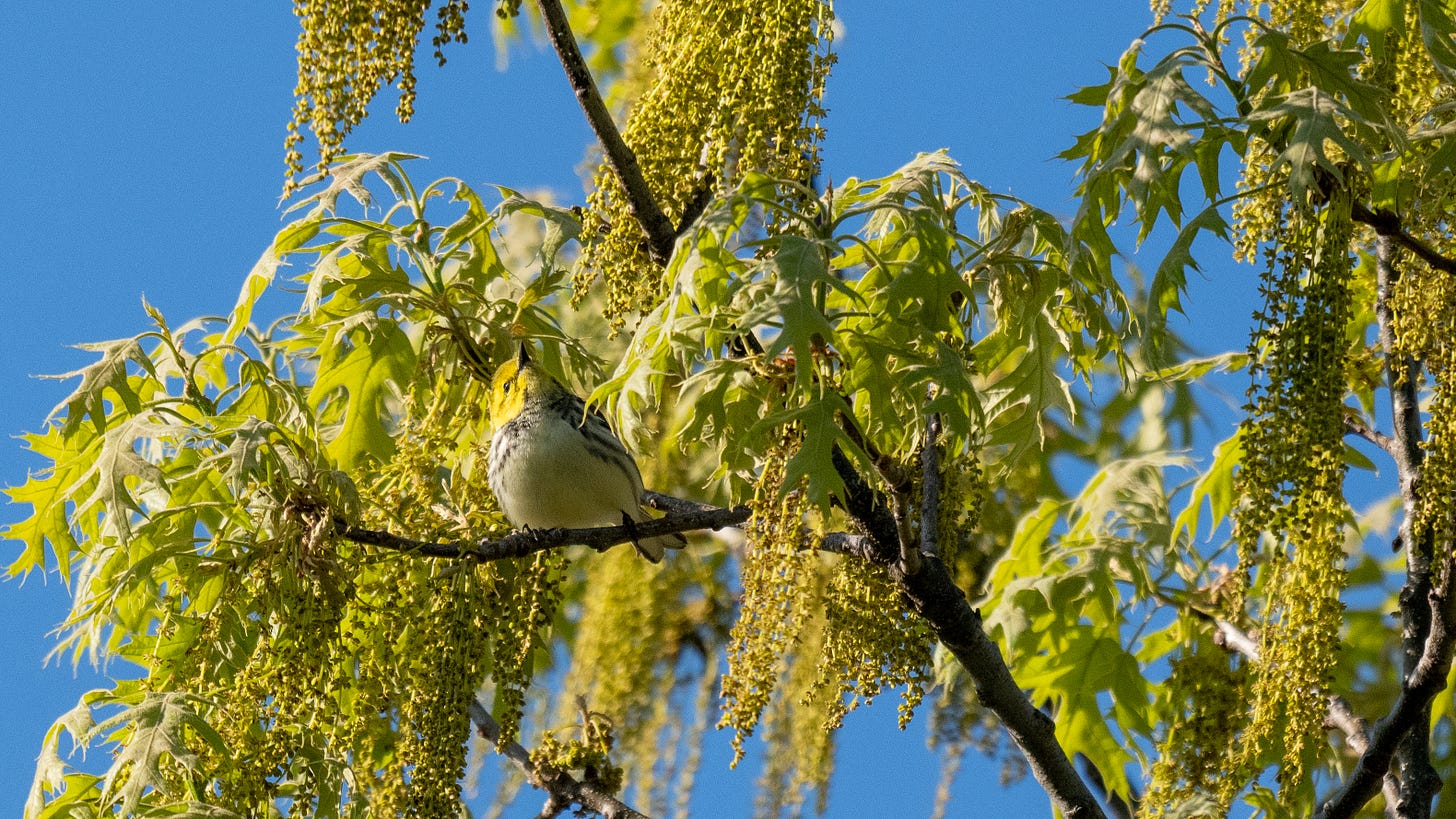
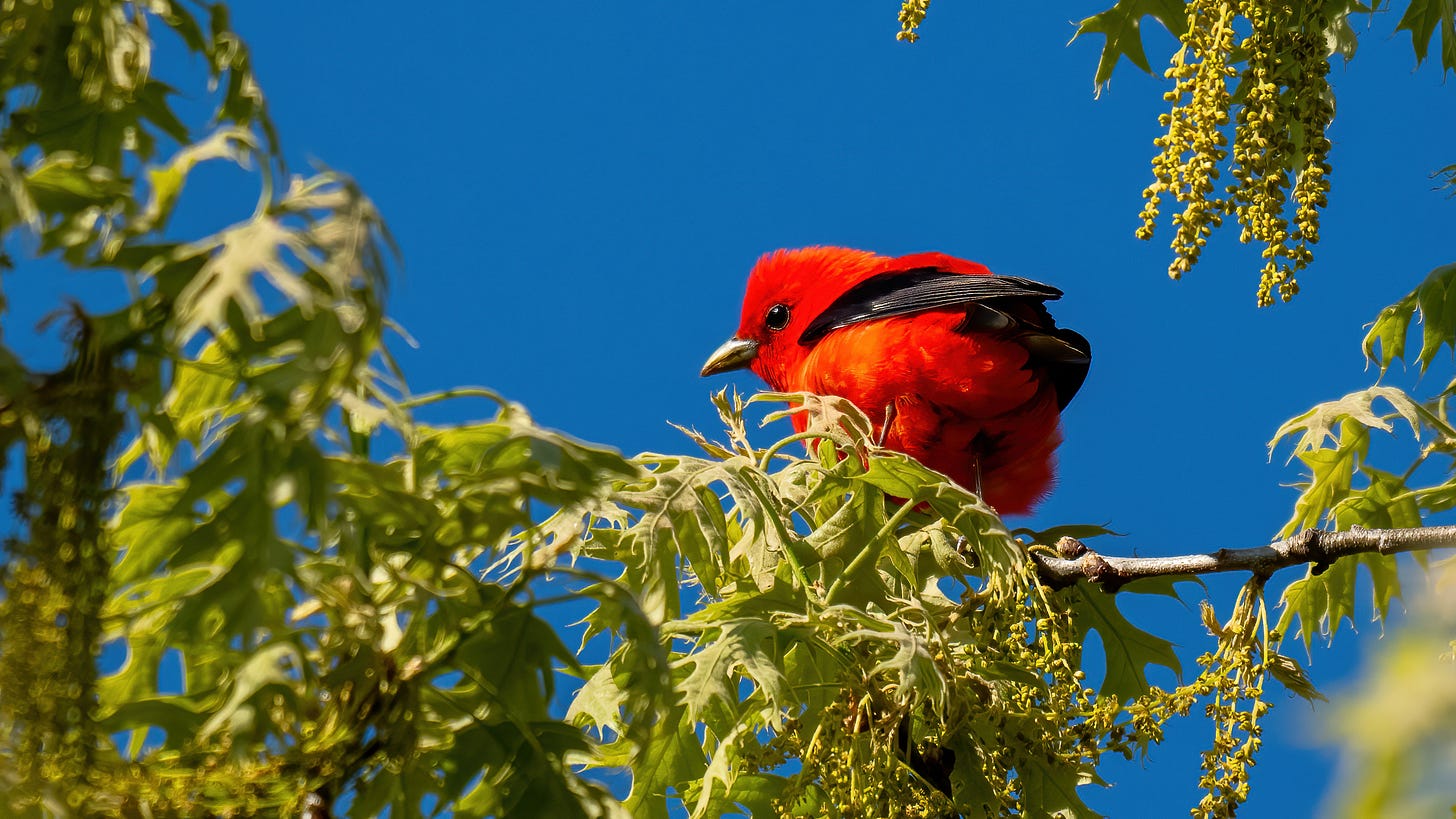
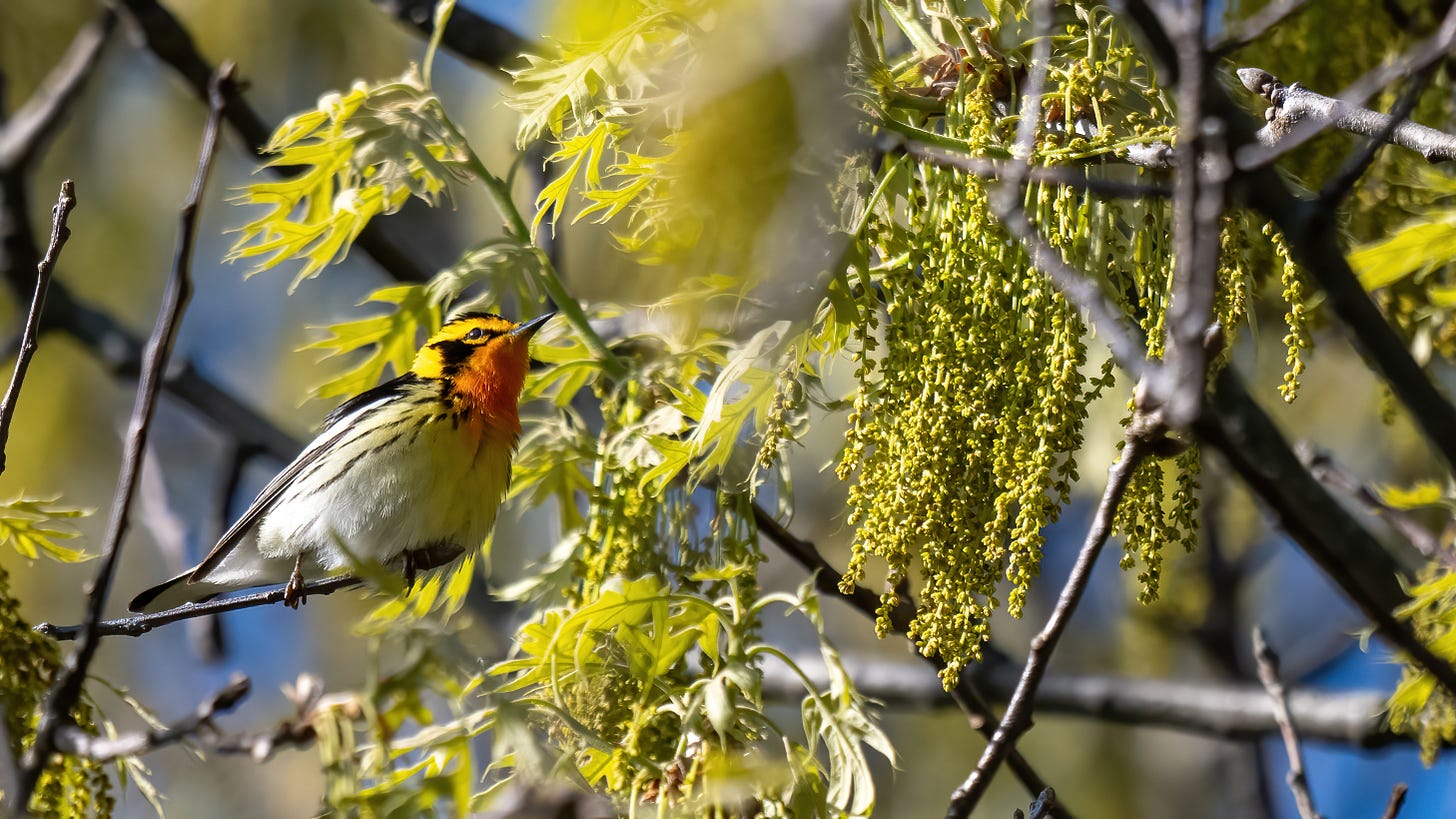

What an abundance of beauty! One can’t help feeling that we are so loved by this World. And then we get to have coffee, too? Now we can be certain. 💛🤎
I can relate to the obscenely early morning coffees as a pre-birding ritual, haha. Congratulations on the photos of the Blackburnian Warbler. They're quite a stunning little bird. I don't think I've ever gotten more than a passing glimpse of one. Also, I will never be bored with seeing the Scarlet Tanager. Those photos of yours make the red colour surreal against the blue sky in the background. Awesome sighting. Thanks for sharing, James.